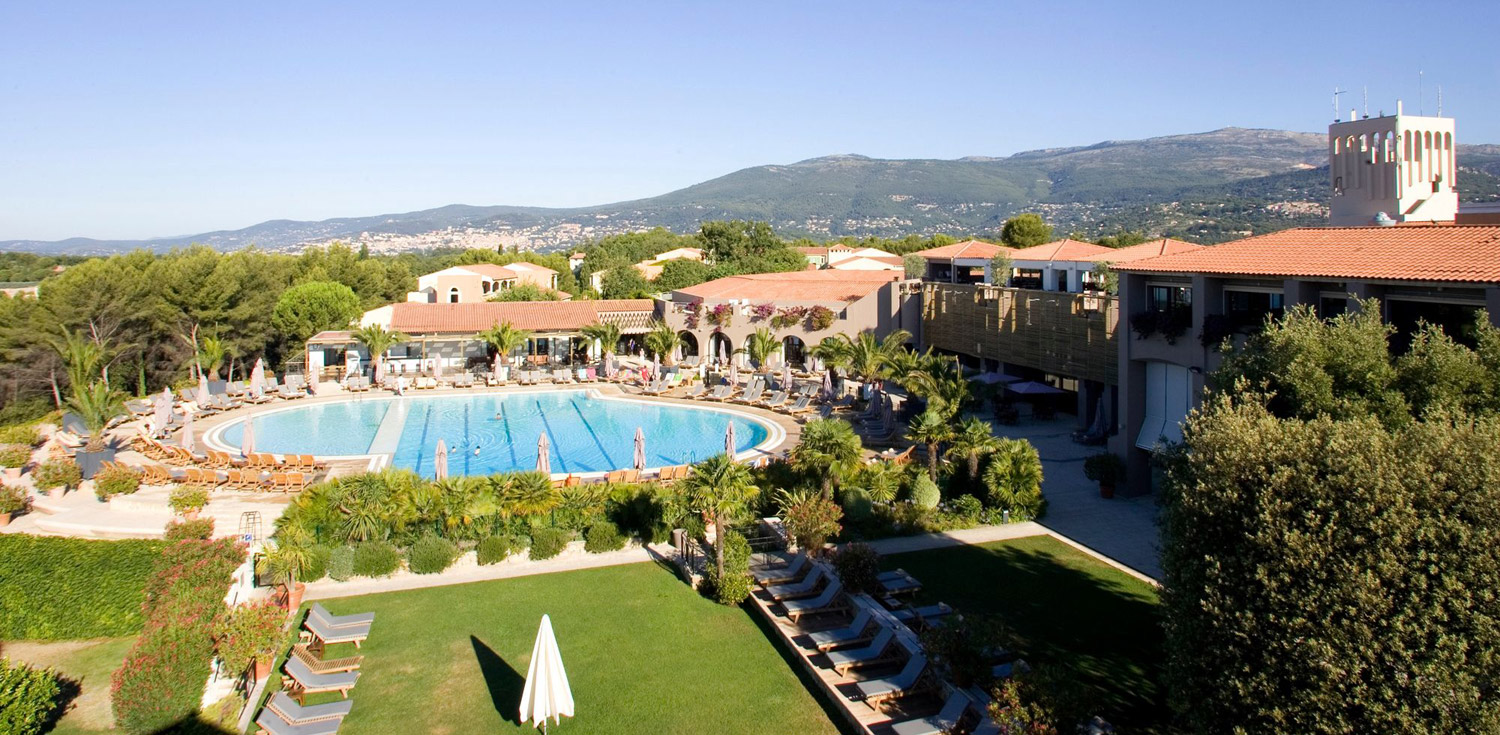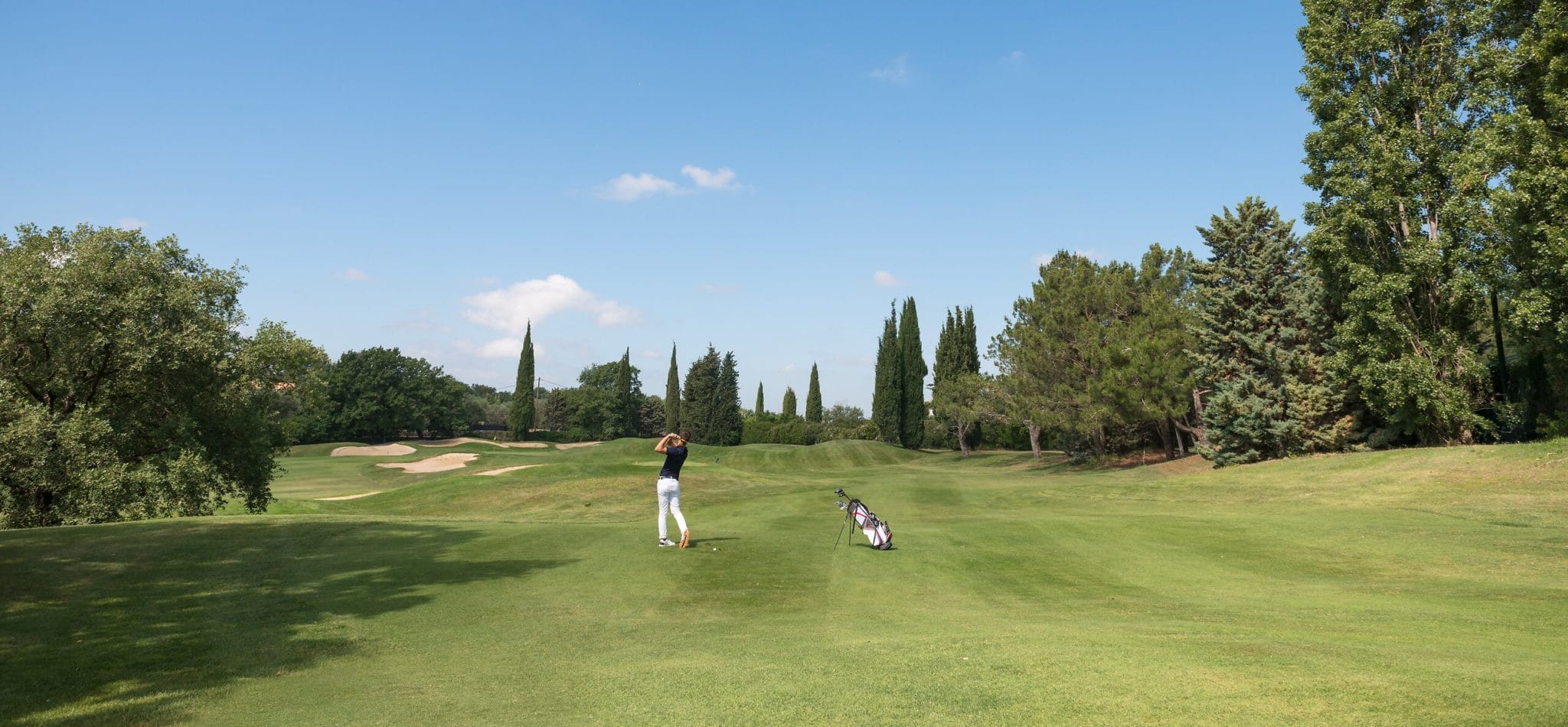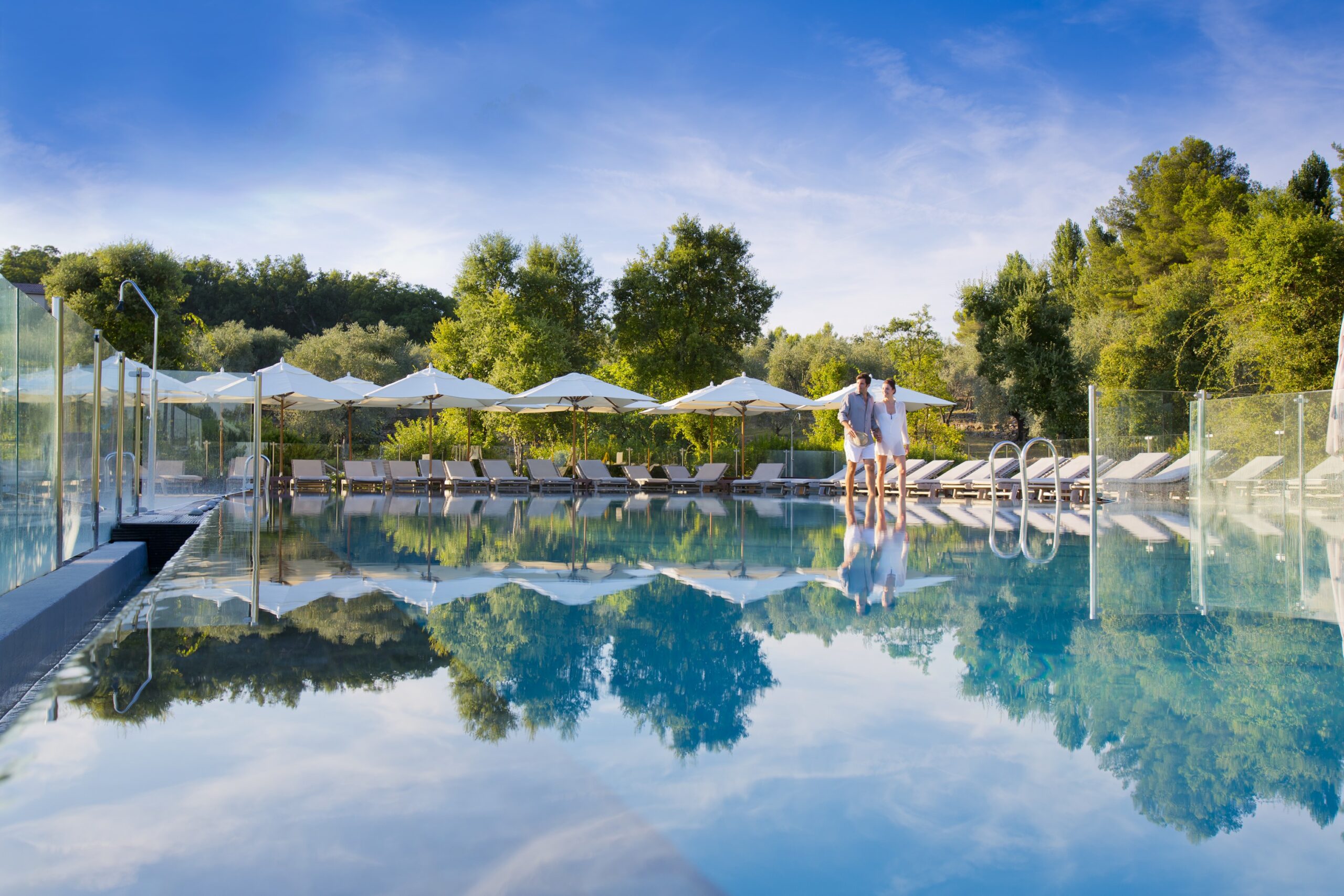
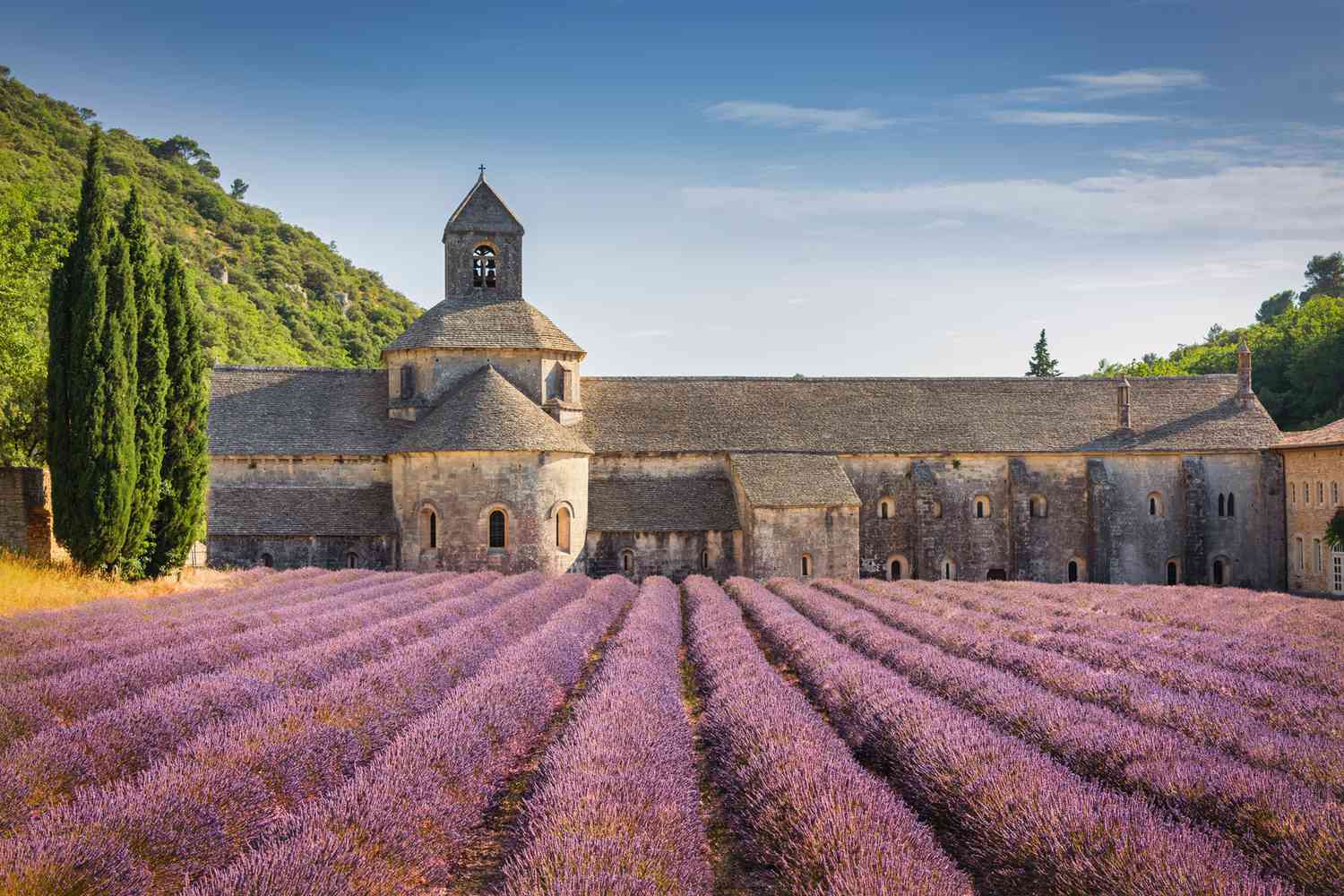

Southern France’s landscape is undeniably wonderful. What gives “Le Sud” its peaceful picture -as Van Gogh painted it- is the combination of the variety of landscapes. From the Mediterranean sea to the Pyrenees mountains, passing by the endless land of vines, lavender or sunflowers, Southern France has it all. You will find steep cliffs that hide sublime villages bathed in sunshine.
The good mood is awaiting for you in Southern France. The sunny climate of the region keeps the people outside which tends to make them warmer (as the sun) and more outgoing.
Southern France is the land of the sun, where the wine is a star. Bordeaux, of course, is the place to go for a wine tour however the Languedoc-Roussillon region has also some gems that you must try. French culinary is also another reason to be there especially when accompanied by a good french wine.
The endless beaches that border the coast of Southern France are perfect for sunbathing and swimming. The sea is also great for watersports, a little kayak ride or some kitesurfing for the most adventurous.
French people do love to eat tasty food and talk about the meaning of life in front of a delicious glass of wine (or bottle!). But the Southern lifestyle is a bit different from the North. Since it’s warmer, in the South people go out at night to enjoy the cool refreshing breeze. You will find all the restaurants and bars open late and many activities to do during the evening. Fairs, concerts, festivals, light shows and picnics one the beach (don’t forget the wine) will be at the program for your summer evenings.
Many of the villages in Southern France are ranked among the most beautiful villages in France. They are full of character and we could even say a soul exists as they continue to keep their old traditions. The old houses, the winding cobbled streets and the nature surrounding this places will make you travel back in time.
CANNES
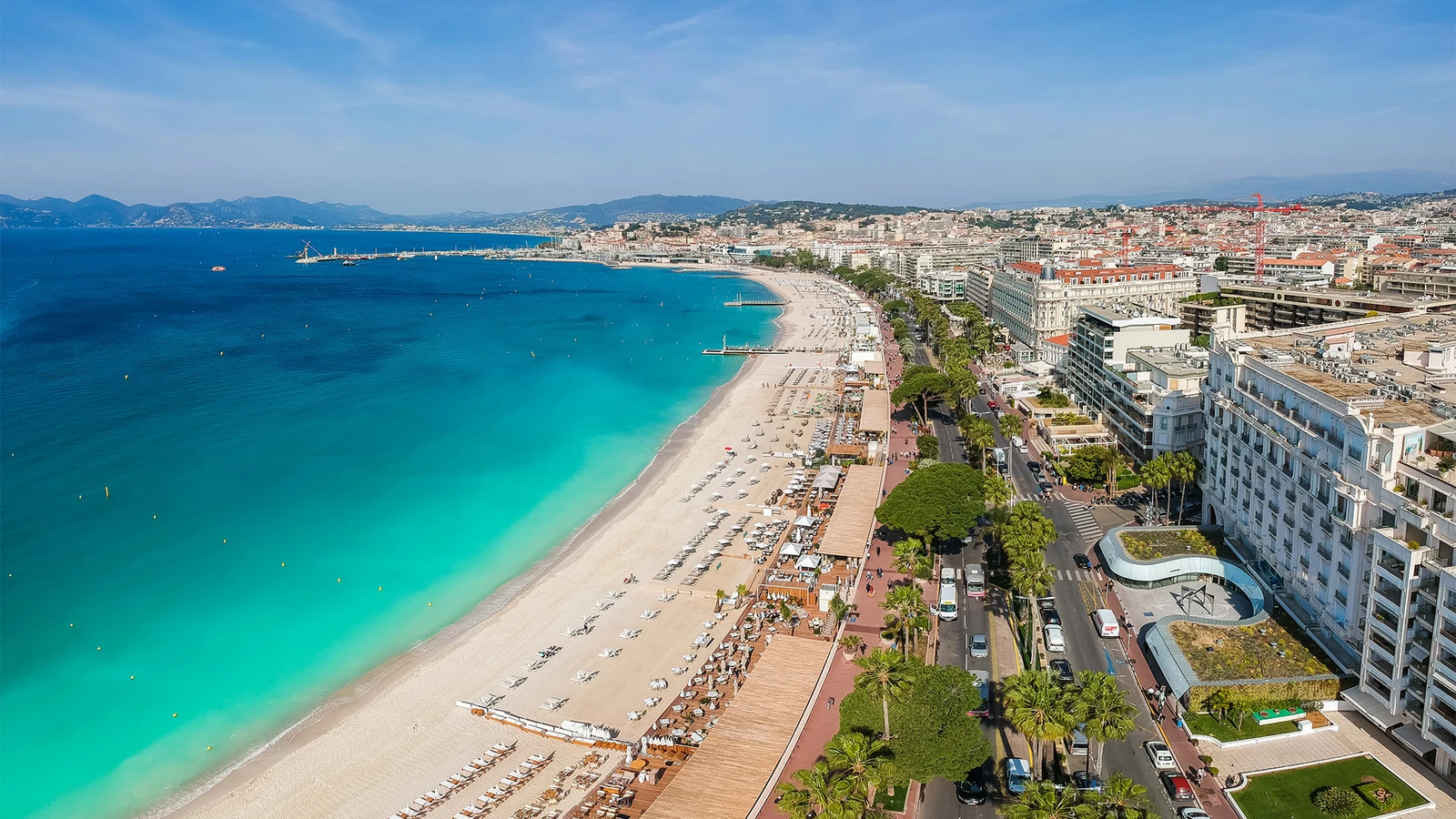
Situated at the edge of the Mediterranean, the city of Cannes enjoys an exceptional location, protected by the Lérins Islands. Just 20 minutes from Nice Côte d’Azur International Airport, and equally accessible from the private Airport of Cannes – Mandelieu, Cannes and the pretty surrounding landscape, is a truly prestigious destination which never fails to surprise, regardless of the time of year.
The City of Festival’s slogan, “Whoever goes there, lives there” is symbolic of its seductive powers and in a city that has achieved legendary status over the years, there’s much to boast about. Renowned globally for the Cannes Film Festival, it has still managed to retain a village-style feel, not unlike a typical south of France town where life looks rosy all year round. Our favourite pastimes include strolling in the traditional medieval Le Suquet quarter, checking out the artisan goods in the Forville market, and wandering through the cobbled lanes fringed by pastel-hued houses that lead down to the Old Port.
Of course, there are also heavenly beaches, exceptional museums, the Lérins Islands and last, but certainly not least, the superb and highly esteemed La Croisette, home to the First Croisette residence.
Whether you’re on land or sea, a glimpse of the city, breathing in its air and experiencing its hum of daily life allows you to be a small part of the legend!
The best things come in small packages! Cannes, once a fishing port between Saint-Tropez and Monaco, is today the nerve centre of the world’s most prestigious events, attracting worldwide attention!
Just 20 minutes from Nice Côte d’Azur Airport, with its numerous connections, a stone’s throw from the Cannes – Mandelieu private Airport, and a few kilometres from Monaco, Cannes enjoys a central location with multiple connections by land, sea and air. With its mild climate, breath-taking landscapes, charming alleyways, palm-tree lined promenades, turquoise seas, sun-ripened gastronomy, unique events and prestigious real estate, no one leaves Cannes indifferent to its charms. This is a place where simplicity becomes exceptional, beauty becomes the norm and a lunch in the sun is something to remember forever.
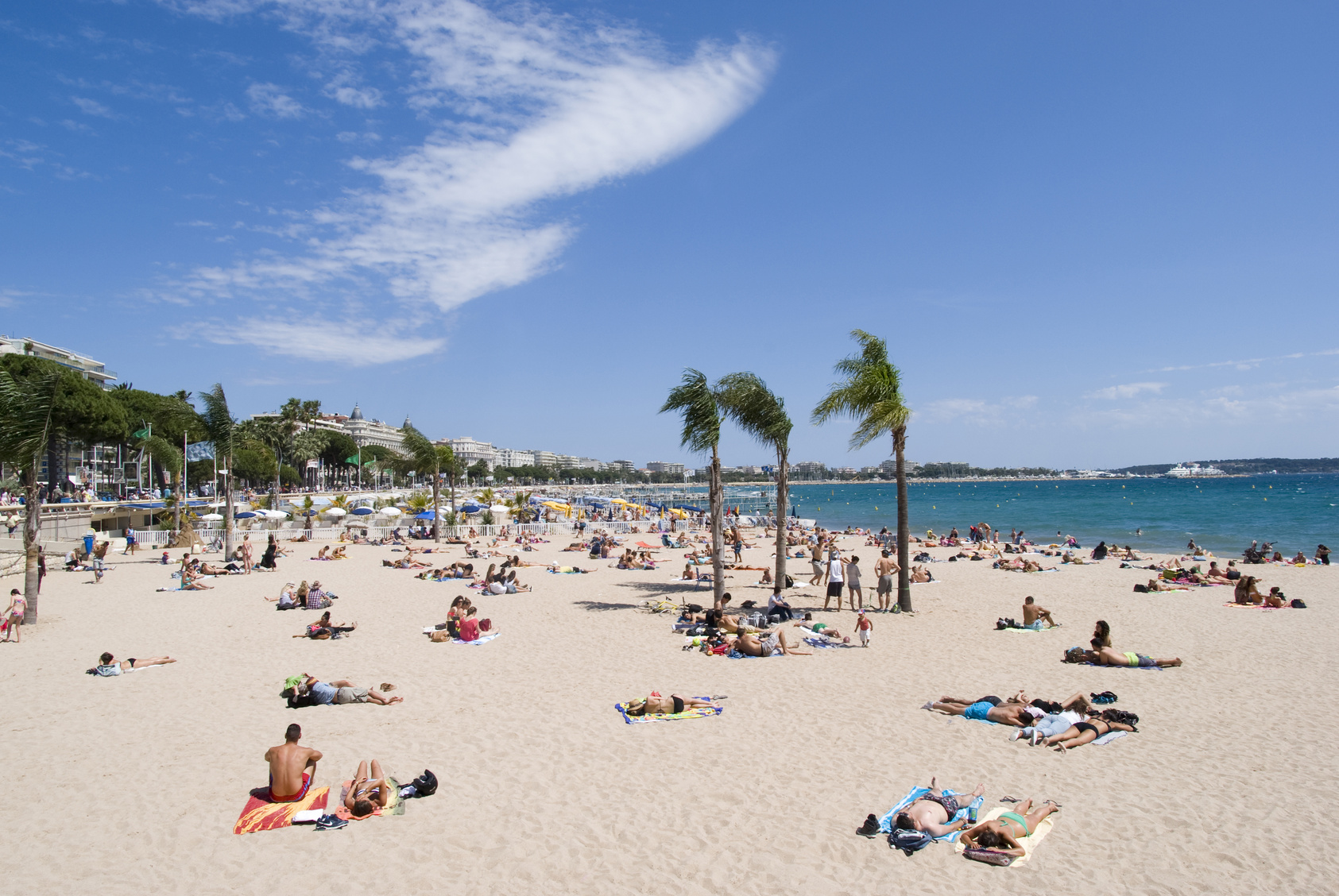

NICE
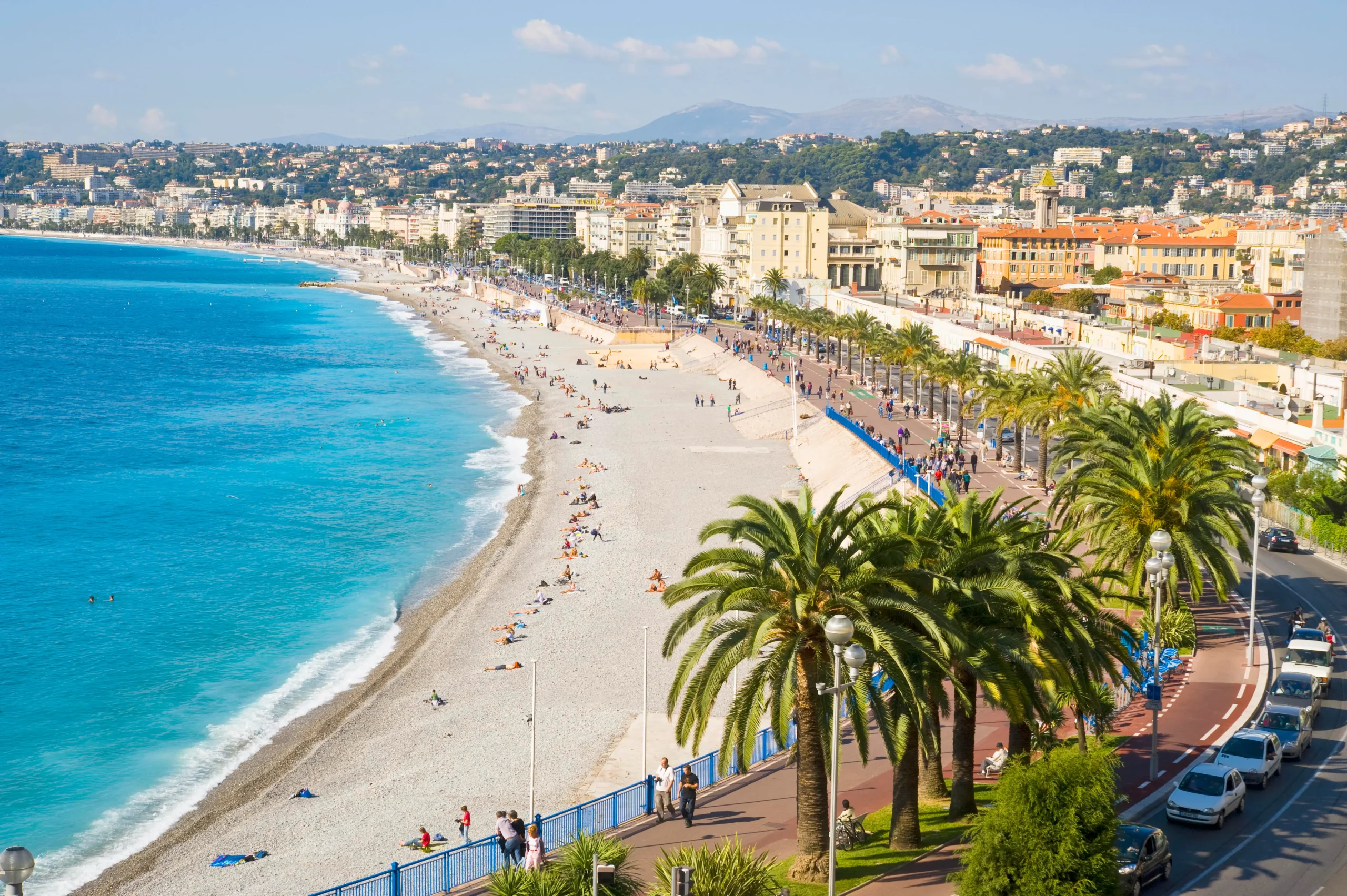
Think of the South of France and Nice comes squarely into mind. With its broad avenues, wide sweeping bay and golden beach it is not difficult to see why some 3 million people flock to Nice every year. Only Paris rivals it as a tourist attraction. With the famous Promenade des Anglais, the Matisse museum, the Russian Cathedral and Vieux Nice, there is so much to do and see.
Surprisingly, some of the best times of the year to visit Nice are outside of the summer season. During February, Nice holds one of the oldest and biggest carnivals in the World. The enormous Nice carnival procession takes place over 15 days during the Mardi Gras.
Also, during December, the Nice Christmas market (“Le Village de Noel”) takes over the central Jardin Albert 1er and incorporates an ice rink, a Ferris wheel and a lot of Christmas related food and drink.
Nice has very convenient transportation. If you want to visit the south of France, you can actually stay in Nice because it is located between Cannes and Monaco. You can stay in Nice and then go to Cannes and Monaco to play, which is very convenient. It only takes about 30 minutes by train from Nice to Cannes, Monaco, Menton and other places. ,
Those early English visitors wanted a place to stroll and admire Nice’s perfect crescent bay without getting their shoes dirty. So they built the seaside Promenade des Anglais (“Walkway of the English”) and studded it with palm trees. Today, this iconic pathway is a fun people scene, where the chicest of the chic and the cheapest of the cheap scramble for a spot in the sun.
The beach has something for everyone: volleyball, table tennis, paddleboats, windsurfing. Tan lines, though, can be hard to find, as Europeans are relaxed about topless sunbathing. While some stretches of the beach are public, much of it is private.
But Nice is much more than the beach and the sea. With its fine palette of museums (most of which are free), good food, and ramble-worthy old town, Nice is the enjoyable big-city highlight of any Riviera visit. The city is in the midst of reinventing its public spaces, creating green parkways and demolishing old eyesores. A modern, smooth-as-silk tramway running through the center of town makes it cheap and easy to get around.

The old center itself is traffic-free. With its soft orange buildings and steep narrow streets, this part of town feels more Italian than French. It’s not surprising, because until 1860 Nice was ruled by an Italian king. The fresh pasta shops (which you’ll find nowhere else in France) and many gelaterias remind you how close Italy is. This mixed pedigree has left Nice with a likeable blend of French superiority and Italian informality.
The plaza called Cours Saleya, a commotion of color, sights, smells, and people, has been old Nice’s main market since the Middle Ages. Boisterous flower and produce stalls trumpet the season with strawberries, white asparagus, zucchini flowers, and more. Whatever’s fresh gets top billing. Locally produced soaps, sachets, and spices are attractively packaged and make good souvenirs. On Mondays, antique vendors take over the space.
In this ideal Mediterranean climate, fragrant roses, lavender, and jasmine seem to grow effortlessly, and it’s no wonder that perfume is a local industry. The Molinard family, for one, has been making perfume from Riviera flowers for a century. (You can experiment with mixing your own fragrances at their storefront museum near Nice’s promenade.) Perfume makers like to say that scents are first distilled like cognac and then aged like wine. They aren’t exaggerating: 660 pounds of lavender go into just one quart of pure essence.
Besides tourists, Nice’s sublime light and weather has attracted artists. In the early 20th century, Henri Matisse and Marc Chagall were among the masters who came here, and the city has a museum devoted to each. The Chagall Museum is a delight, even for those who are suspicious of modern art. Chagall painted a cycle of canvases just for this museum, each a lighter-than-air collage of images inspired by his Russian-folk-village youth, his Jewish heritage, and biblical themes.
Some of those curves could have been inspired by the smooth arc of Nice’s landmark bay. See for yourself by hiking up Castle Hill, the rocky promontory that moors one end of the beach. For a grand finale to any day, go at sunset with a picnic and a bottle of local wine, and soak up the sensational 360-degree views of the grand promenade and the spectacular Alps-to-Mediterranean scenery.
ST TROPEZ
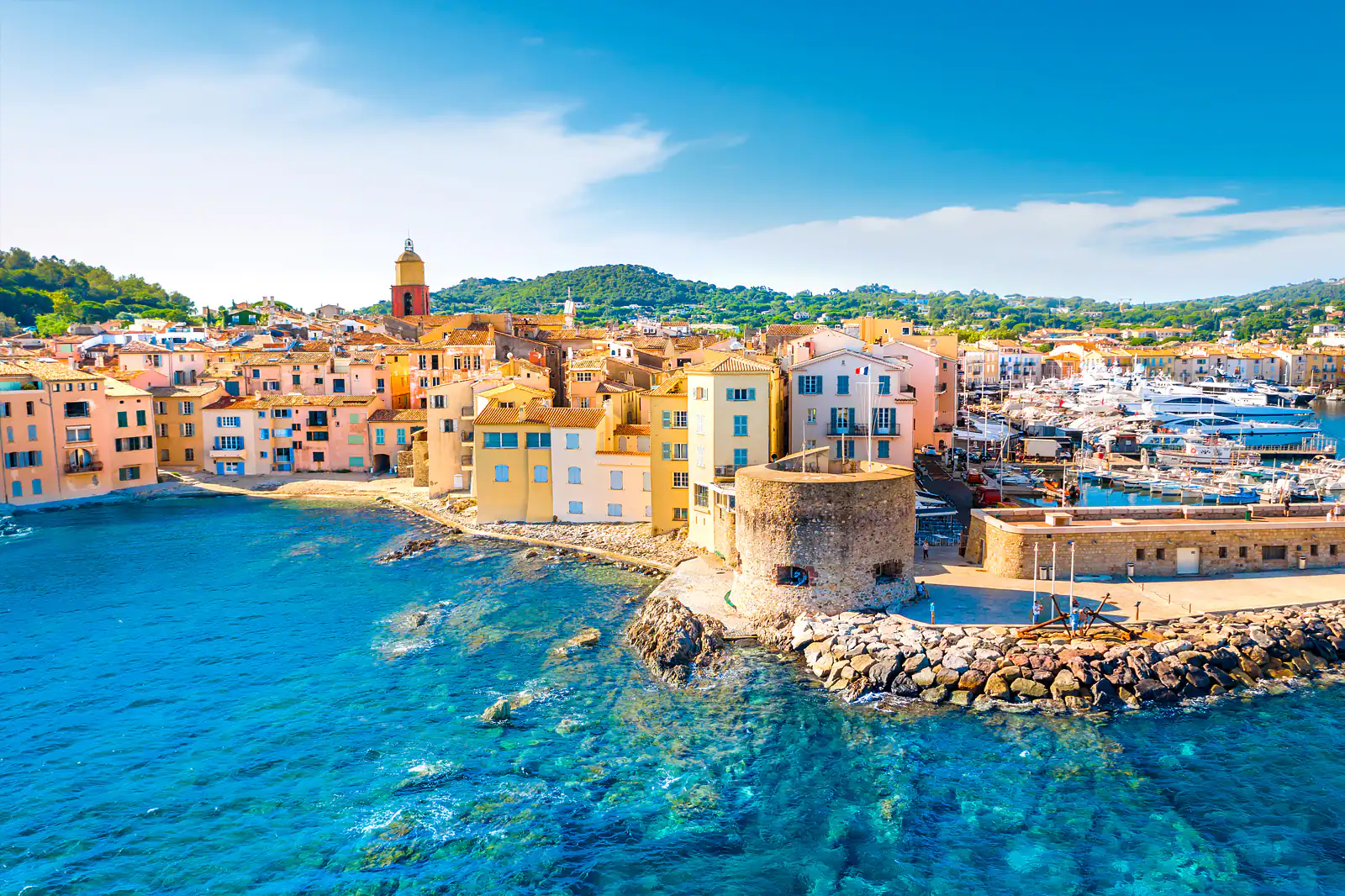
Glitzy, chic, relaxed, rich, sunny, beautiful. Whatever adjective you use to describe St Tropez, it still does not satisfactorily sum up this top South of France resort. Commencing with Bridget Bardot and continuing with present day celebrities, St Tropez in the South of France continues to be the summer home of the rich, famous and beautiful.
St Tropez’s beaches (Tahiti Plage and Pampelonne) are among the best in the world and its harbour only loses out to Monaco for the impressive array of yachts on show.
Saint Tropez is located on a small bay, close to the major resort town of Sainte-Maxime. The city of Toulon is 50 kms to the West and Cannes is 70 kms to the East.
Many people will visit Saint Tropez for a day while on holiday in Provence – Cote d’Azur. The legendary village receives visitors from all over the world. Luxury yachts are moored in the harbour, expensive cars are driven around and in some restaurants a cup of coffee or a glass of wine will be very expensive. However, if you were to leave the harbour and roam the old streets of the village, you’ll find yourself in a very different environment. A place where you’ll find charming squares, small beaches and Provencal markets. Originally Saint Tropez was an ordinary fishing village which it still is in wintertime. By then the fishing boats are back in the harbour. In July and August it is extremely busy in the village and all the entrance roads are packed. It would be better if you sail from Saint Maxime or Cannes. The best time to visit Saint Tropez is spring and autumn.
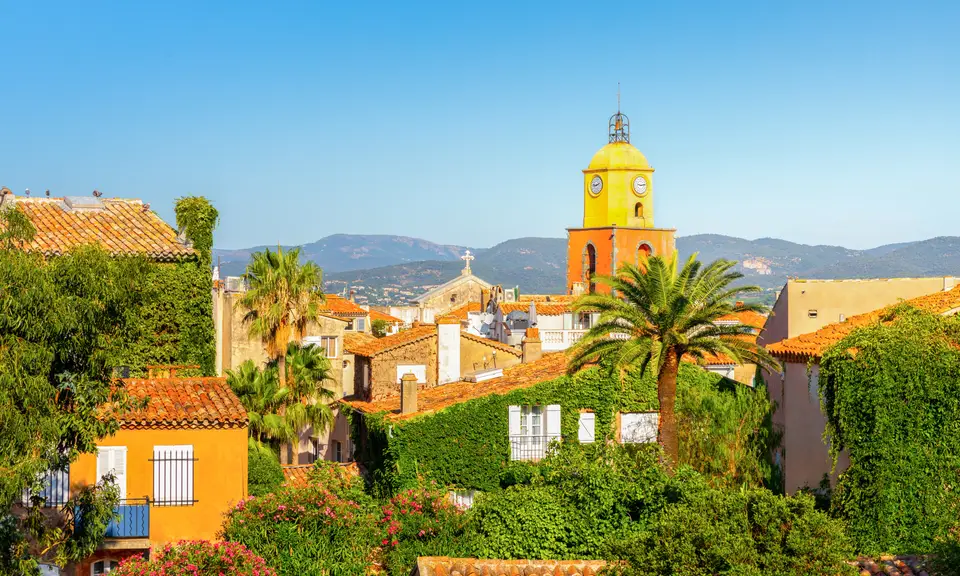
Festivities on May 17 in Saint Tropez
Very often people mistakenly think that the name Saint Tropez originated from the word ‘tropical’. The village is actually named after the Saint Torpes of Pisa. He was beheaded during the time of Emperor Nero. Legend has it that his body or even just his head was placed in a boat. The boat drifted towards the Mediterranean Sea and washed ashore on May 17 where Saint Tropez is now located. Every year, on the day that Torpes is commemorated, there is a pilgrimage to Pisa. May 17th is still a public holiday in Saint Tropez. On that day there is a procession through the streets with women in traditional attire. On May 18th there are parties and the streets are filled with people dancing to Provencal music. The festivities are called ‘Bravade’, which means bravery.
Saint Tropez, Pablo Picasso and Brigitte Bardot
Around 1900 a number of painters and artists moved to Saint Tropez. At the time Matisse and Picasso weren’t famous. They painted several of their famous paintings here. This can still be seen in Museum ‘Annonciade’. This is the first museum of modern art in France. Wealthy Parisians came to Saint Tropez to buy these paintings. They were impressed by the beautiful surroundings and bought their second homes there. This is how tourism came into being and became a holiday destination for celebrities and artists. Saint Tropez gained international fame around 1950 when Brigitte Bardot moved here.
The port of Saint Tropez
The port is where the focus lies in Saint Tropez. In the summer you’ll find huge yachts with celebrities sitting on deck or on one of the terraces on the harbour. Tourists walk along the well-known quays ‘Quai de l’Epi’ and ‘Quai Suffren’ to admire the boats and their owners. At the end of the quay, at the exit of the port towards the Mediterranean Sea, is Rue du Portalet. This is an area for pedestrians with restaurants and cosy terraces.
Shopping in Saint Tropez
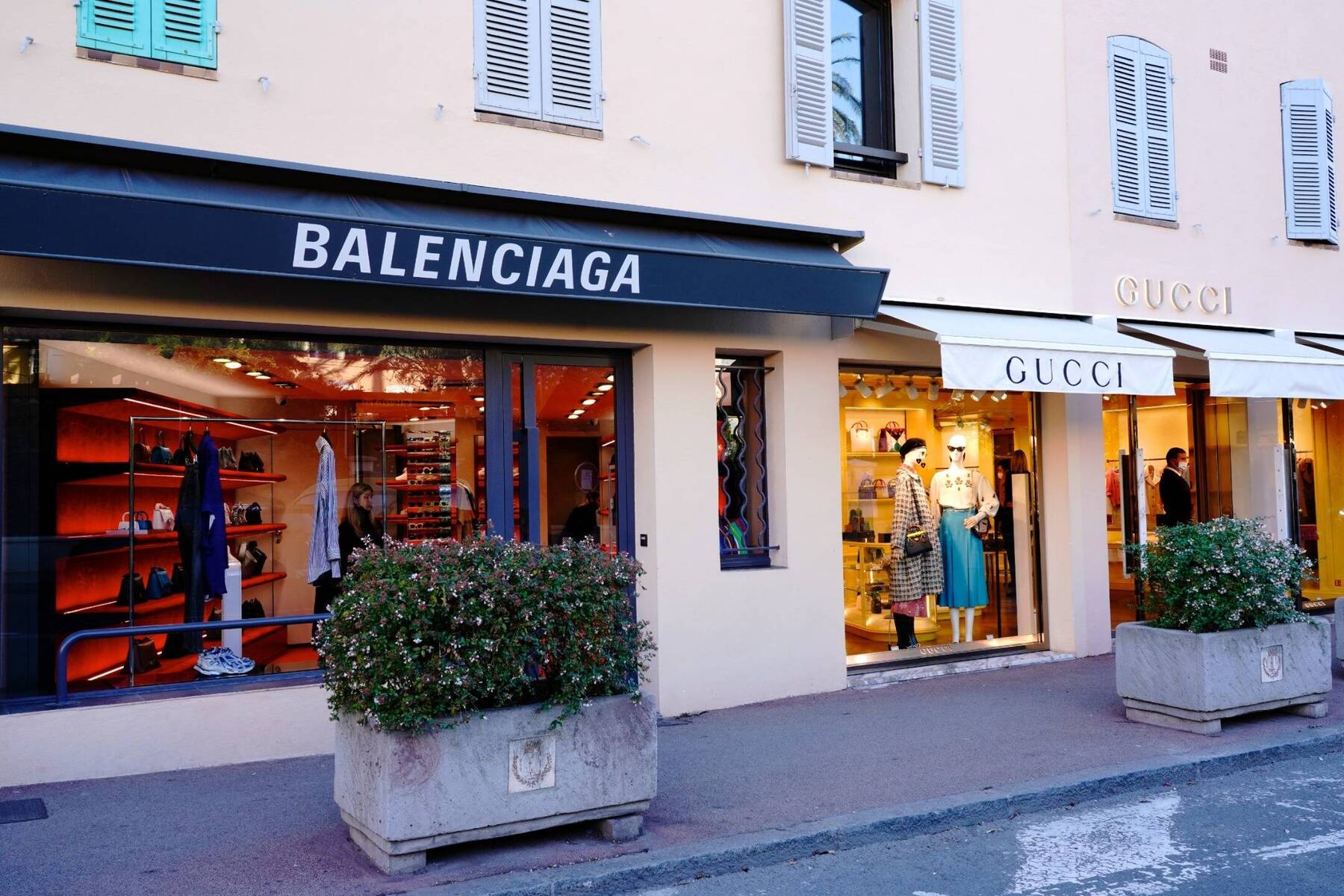
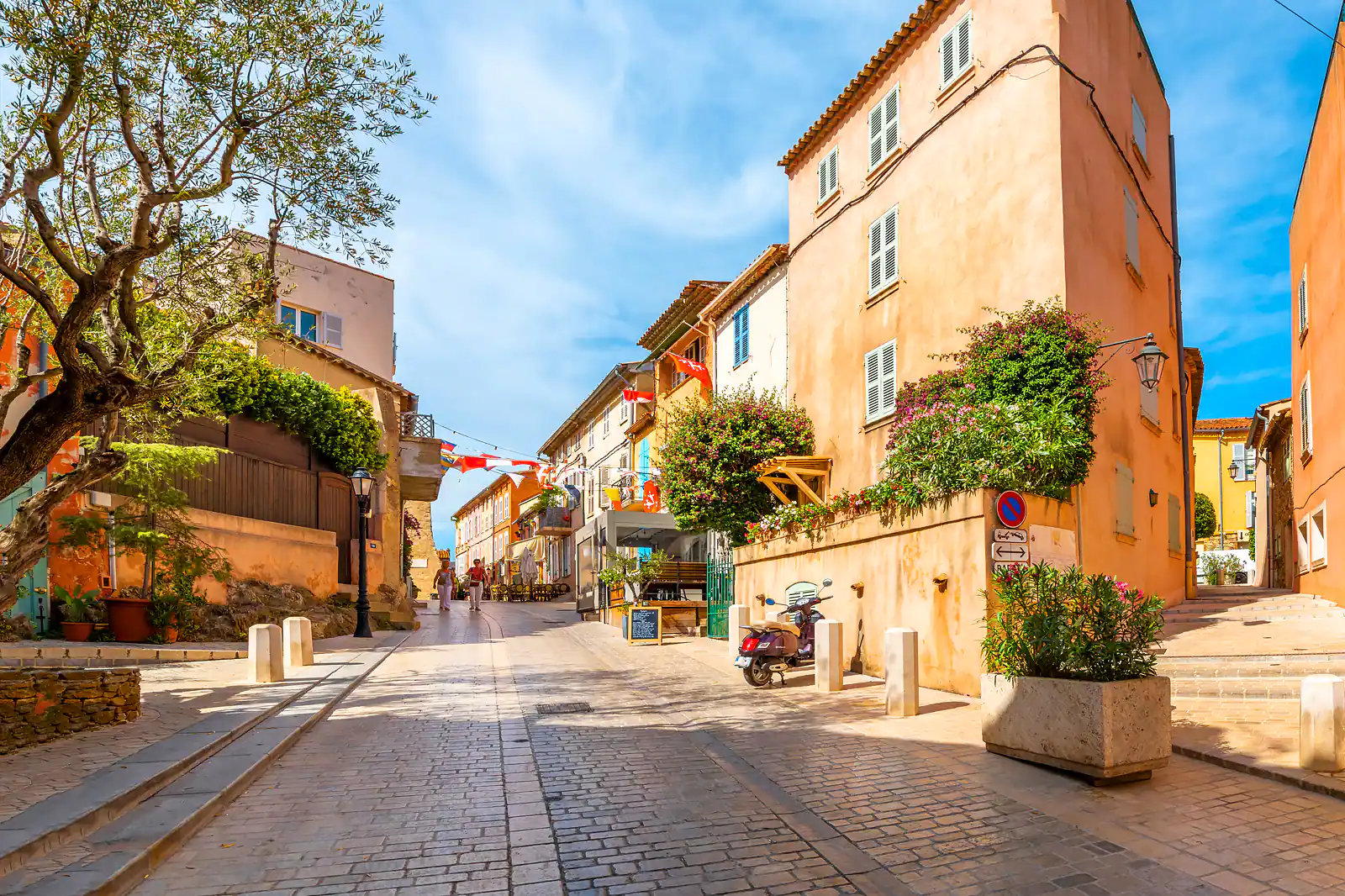
In the old centre are narrow shopping streets. The most famous are ‘Rue Gambetta’, ‘Rue François Sibilli’ and ‘Rue Clemenceau’. These streets are side by side from the port to Place des Lices. The shopping arcade ‘Passage Riva’ is located between these streets. Rue Gambetta has fashion retailers, charming little shops and nice boutiques with antiques and pottery. Rue Sibilli is where all the shops are that sell luxury items and designer brands such as Louis Vitton, Dolce & Gabbana, Dior, Versace and Gucci. The well-known ‘sandales Tropeziennes’ are also sold there. Almost all the stores start their discount sales at the end of the tourist season. During La Grande Braderie, a weekend at the end of October, the discounted items are sold in street stalls.
Place de Lices has a market every Tuesday and Saturday. There is also a market every morning but that is at Place Aux Herbes. You’ll be able to buy vegetables, fruit and fish there. You can also find antiques and curios, sandals and pottery.
The beaches of Saint Tropez
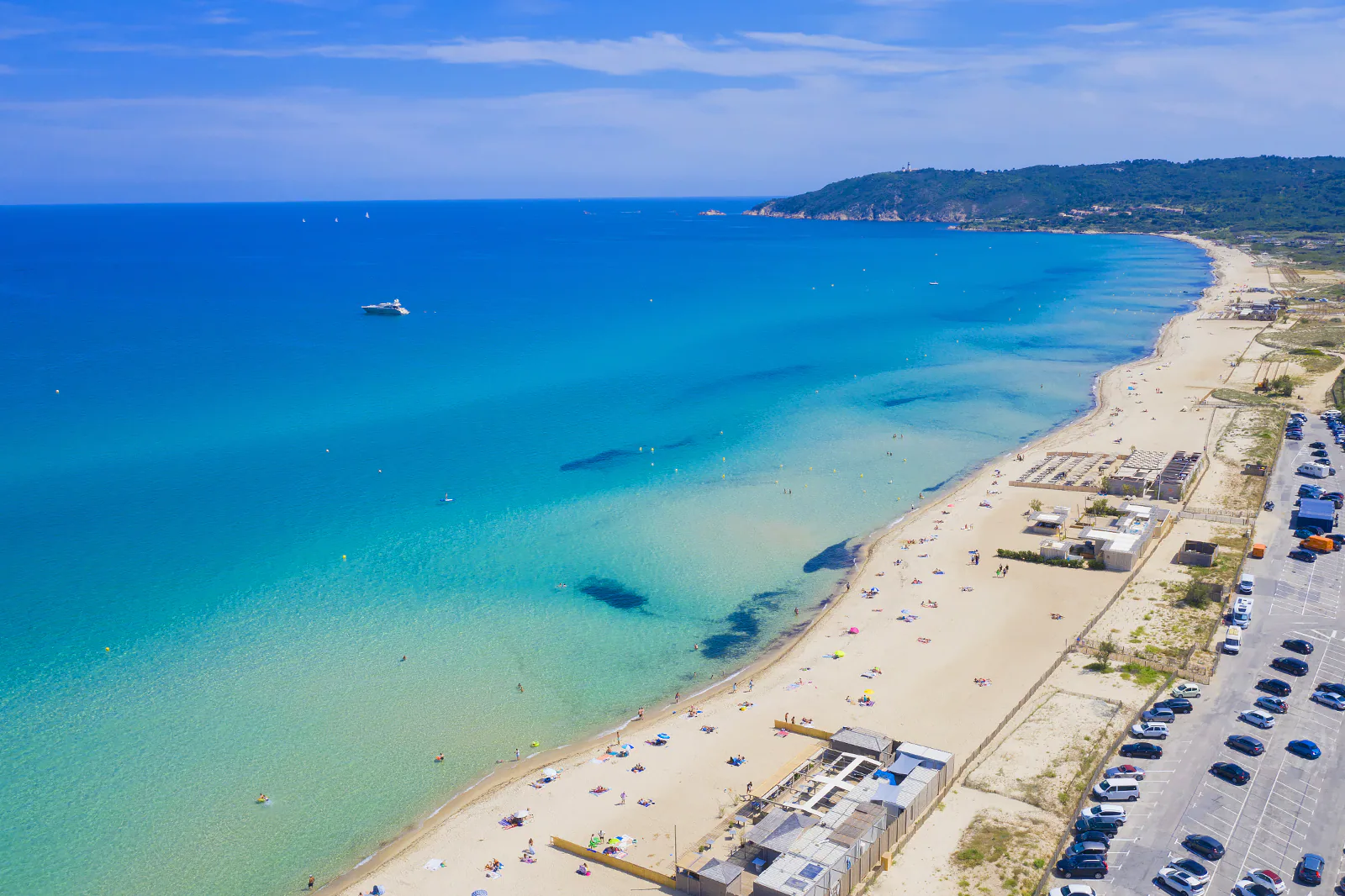
There are several small beaches in Saint Tropez. Here you can sit and enjoy the view or go for a stroll. Swimming is not allowed, you’ll be able to do so on the beaches west of Saint Tropez. That is where all the water sports such as diving, jet skiing and water skiing also take place. East of Saint Tropez are the beaches ‘Plage des Graniers’ and ‘Plage des Canebiers’. Along the entire coast there are beaches behind the cliffs. There is a walking path along and over these cliffs.
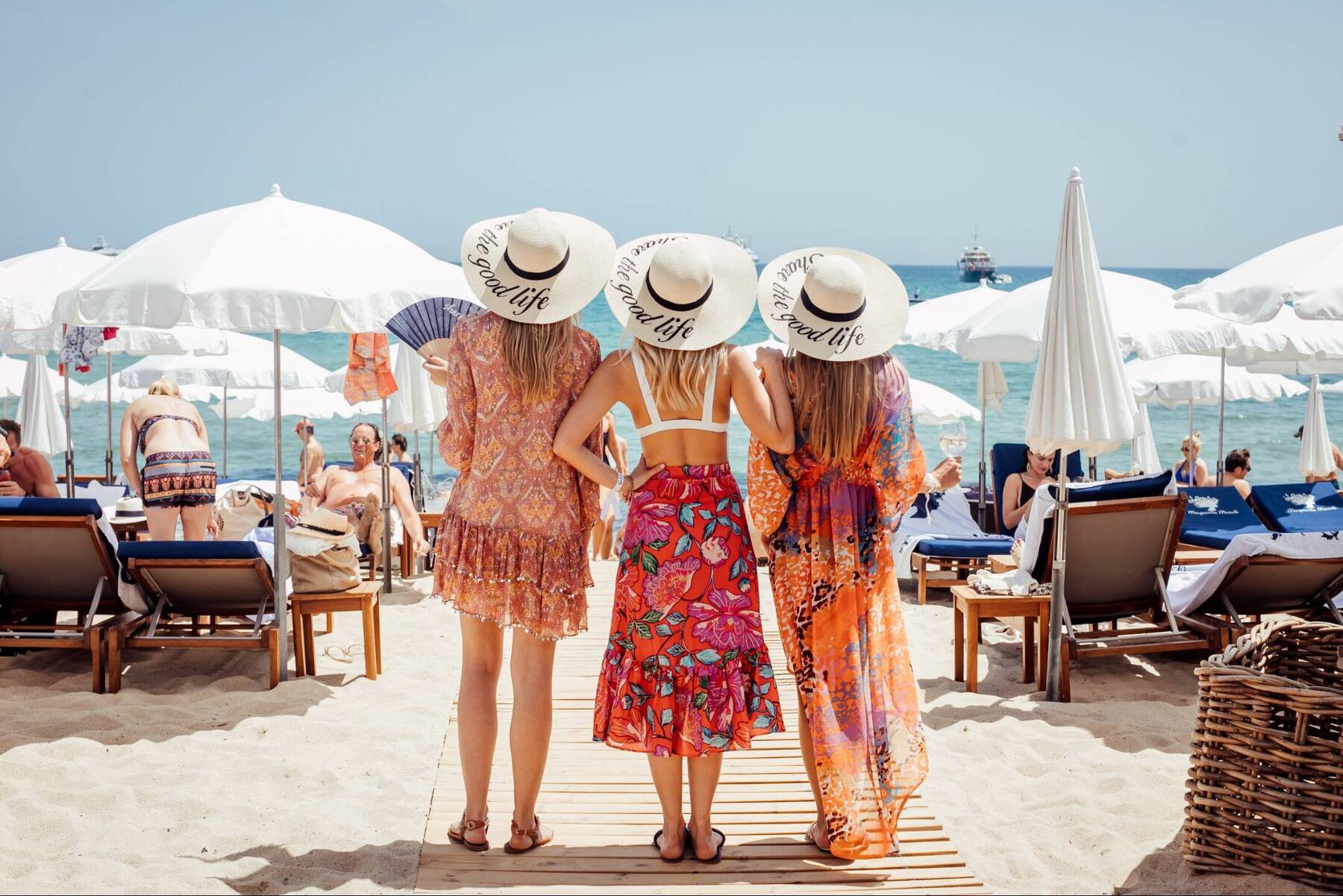
Every summer, images of movie stars, oligarchs and models enjoying champagne on yachts and dancing in nightclubs adorn the pages of celebrity magazines, all with the same caption “spotted in Saint-Tropez”. It is easy to see the attraction of this once tiny fishing village with its beautiful beaches, luxury yachts, exclusive boutiques, cafes and bars offering the millionaire lifestyle with a twist of French Riviera chic.
However, Saint-Tropez has managed to retain a quiet charm in its narrow streets, traditional restaurants shaded by grapevines and the pretty harbour lined with wooden masts. Spectacular white sand beaches line the Gulf de Saint-Tropez while the Provencal countryside rises up behind the town with medieval villages, vineyards and lavender fields sweeping over the rolling hills.
Saint-Tropez combines this old-fashioned charm with its status as the preferred destination for the rich and famous. A pretty Provencal village with an immaculate maze of cobbled lanes filled with boutiques and lovely cottages with painted shutters, Saint-Tropez is also well-known for its designer boutiques, glitzy art galleries, world-renowned beach clubs and exclusive nightclubs.
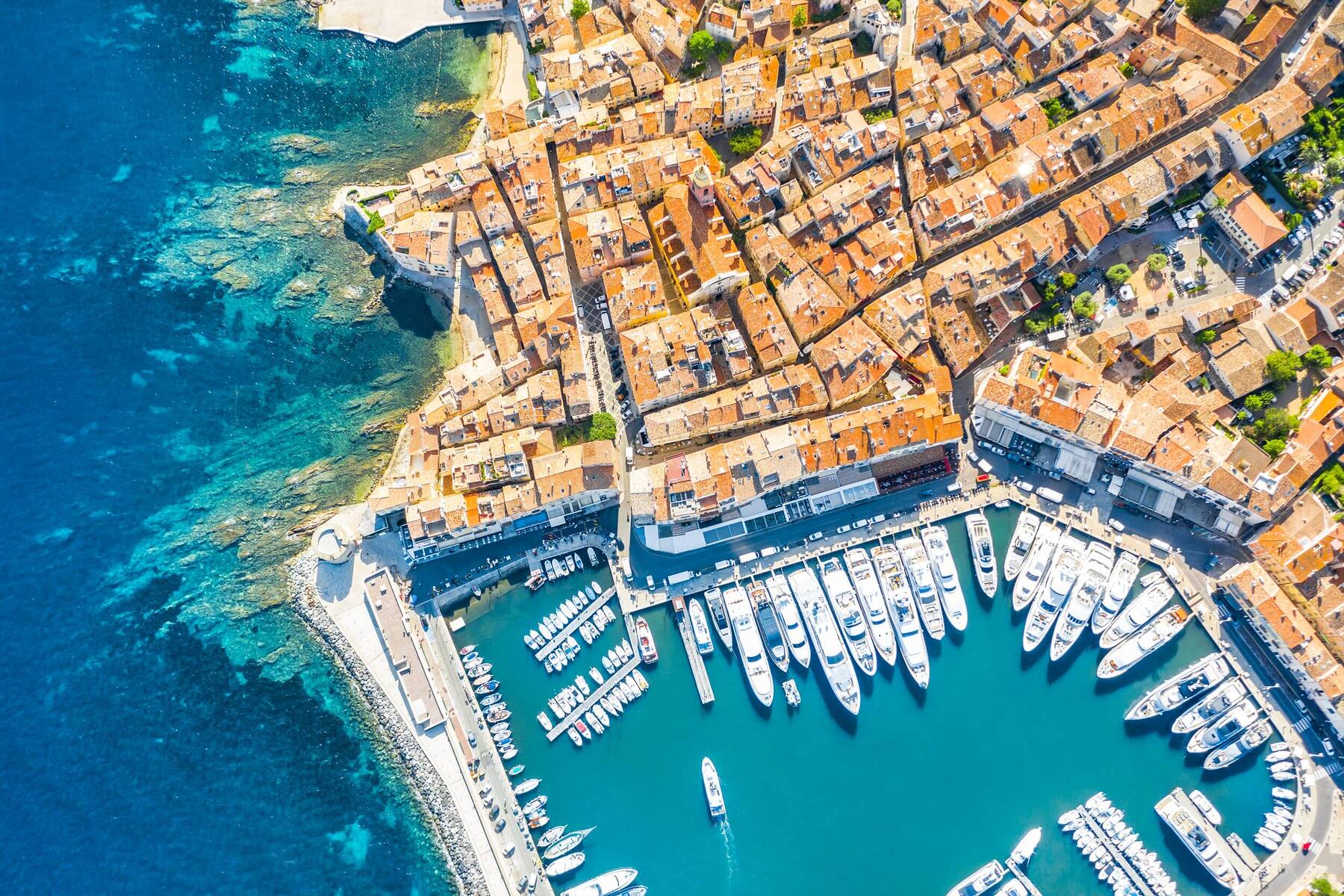
Sailing is a big thing in St Tropez, so charter a yacht and explore the coastline from the sea or book a shared boat trip and visit the charming villages around the bay. For the more active, hire bicycles and discover the gulf using the dedicated cycle lanes or head into the hills of the Massif des Maures, a natural park which has plenty of hiking trails. There are also a number of horse riding centres, theme parks and waterparks. Finally, on Pampelonne Beach you will find watersports galore.
History buffs will enjoy the local museums such as the 17th-century La Citadel, which boasts beautiful views over the sea, the House of Butterflies and the Annonciade Museum, one of the longest-established modern art galleries in France. The famous yellow and red church tower featured in all the photographs of Saint-Tropez is Notre Dame de l’Assomption, a Baroque-style church. The surrounding area has plenty to explore too, with vineyards, gardens and hilltop villages with ruined castles.
ÈZE
The Hearth of The French Riviera
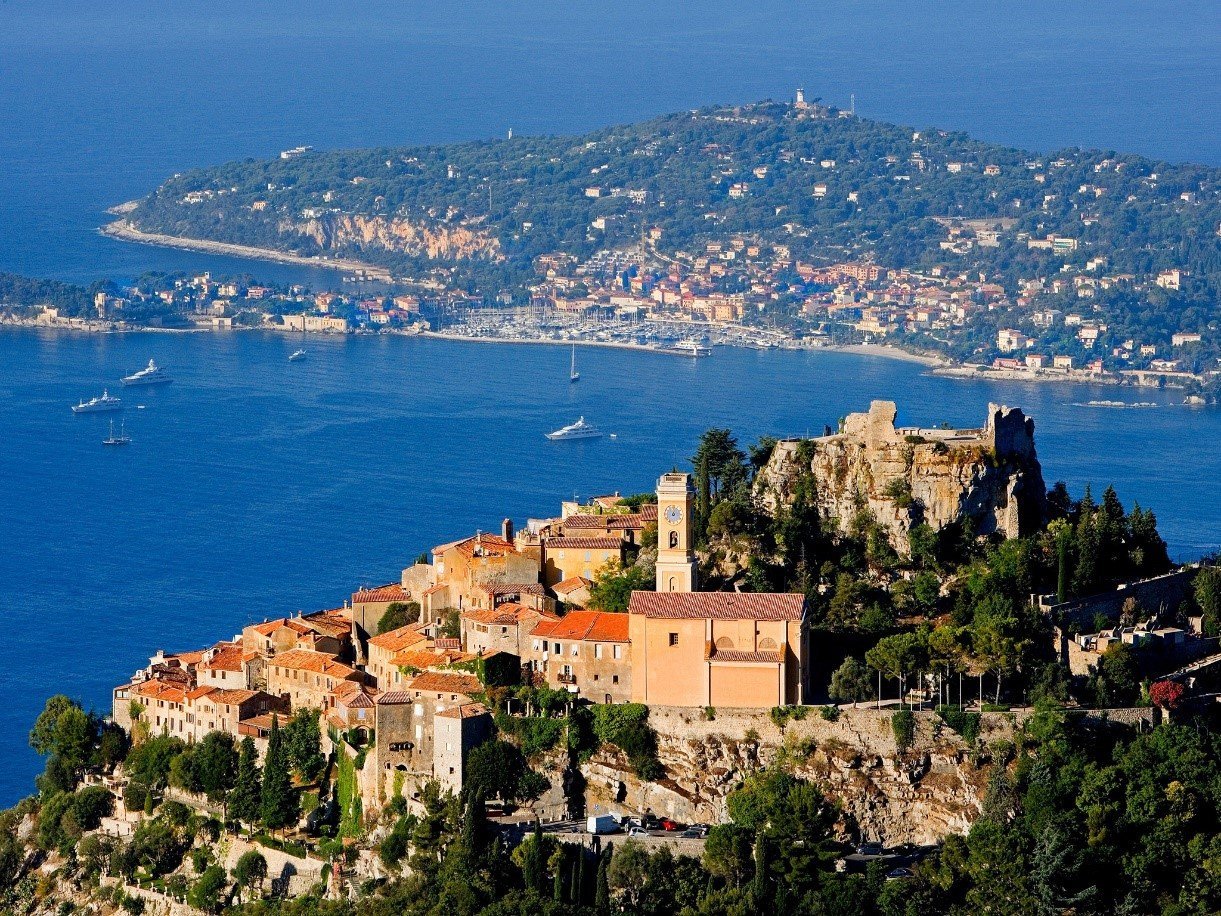
Eze is a beautiful hilltop medieval village in the south of France, between Monaco and Nice. The village is famous for its spectacular views, impressive architecture, and stunning geographical location above the French Riviera.
Eze is famous for offering astonishing views of the Mediterranean Sea and the French Riviera, also known as Cote d’Azur.
The reason that the views are so amazing from any vantage point in Eze is that the village is located on a hilltop of a high cliff about 1,400 feet above the sea level – with the Mediterranean Sea underneath it. The unbelievable views are everywhere you look.
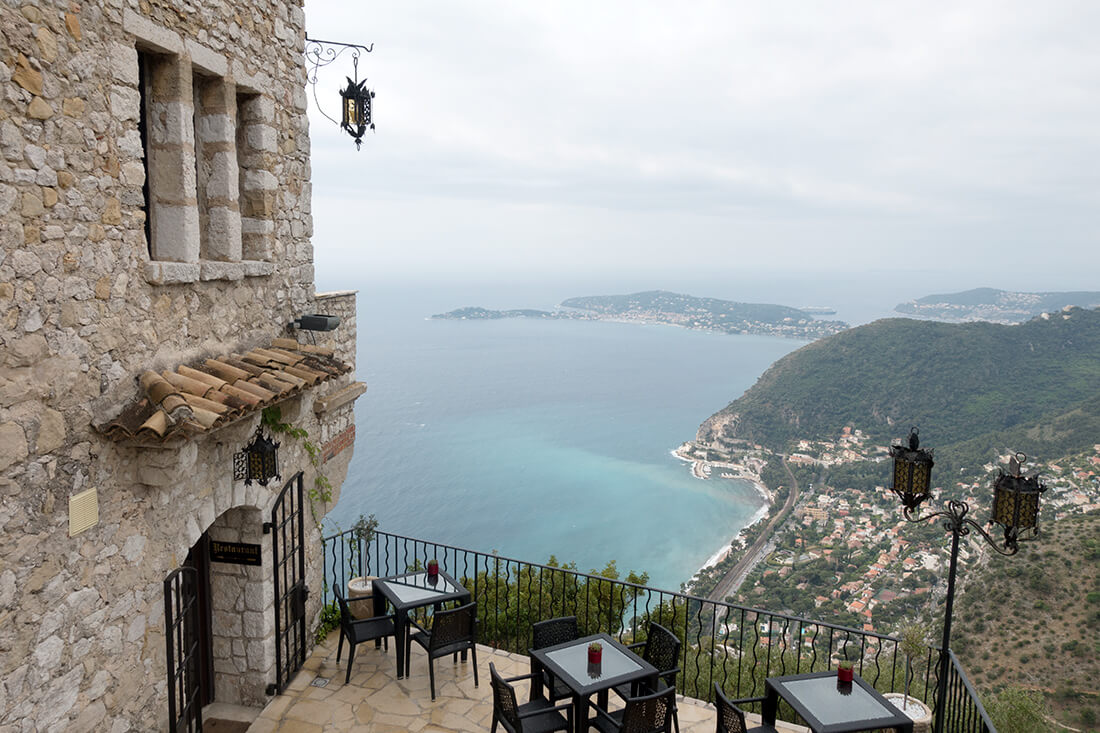
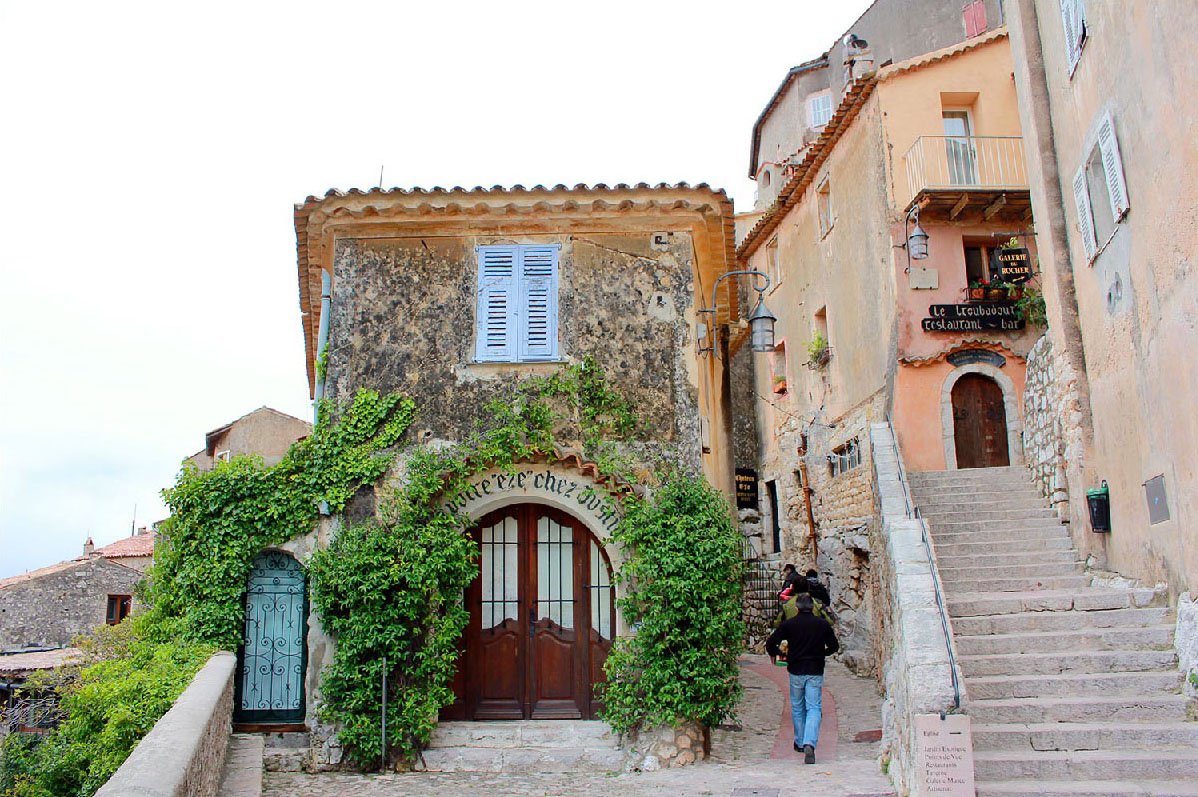
This medieval village, built on the very top of a hill, is today one of the places on the French Riviera most-visited by tourists. No wonder, because the views from above are so magnificent that they are almost unreal. The village is like a castle, with thick stone walls richly covered with colorful flowers.
But it’s not only the views that capture your eyes, as you’re walking the streets. The village has been built as a fortified stronghold during the Medieval period, and the beautiful architecture reflects that.
The Exotic garden in Èze
At the top of the hill in Èze is an exotic garden (Jardin Exotique d’Èze). This is the second most beautiful object of this type on the French Riviera, following just after the impressive exotic garden in Monaco. The garden in Èze offers, above all, an unforgettable view of the Cote d’Azur.
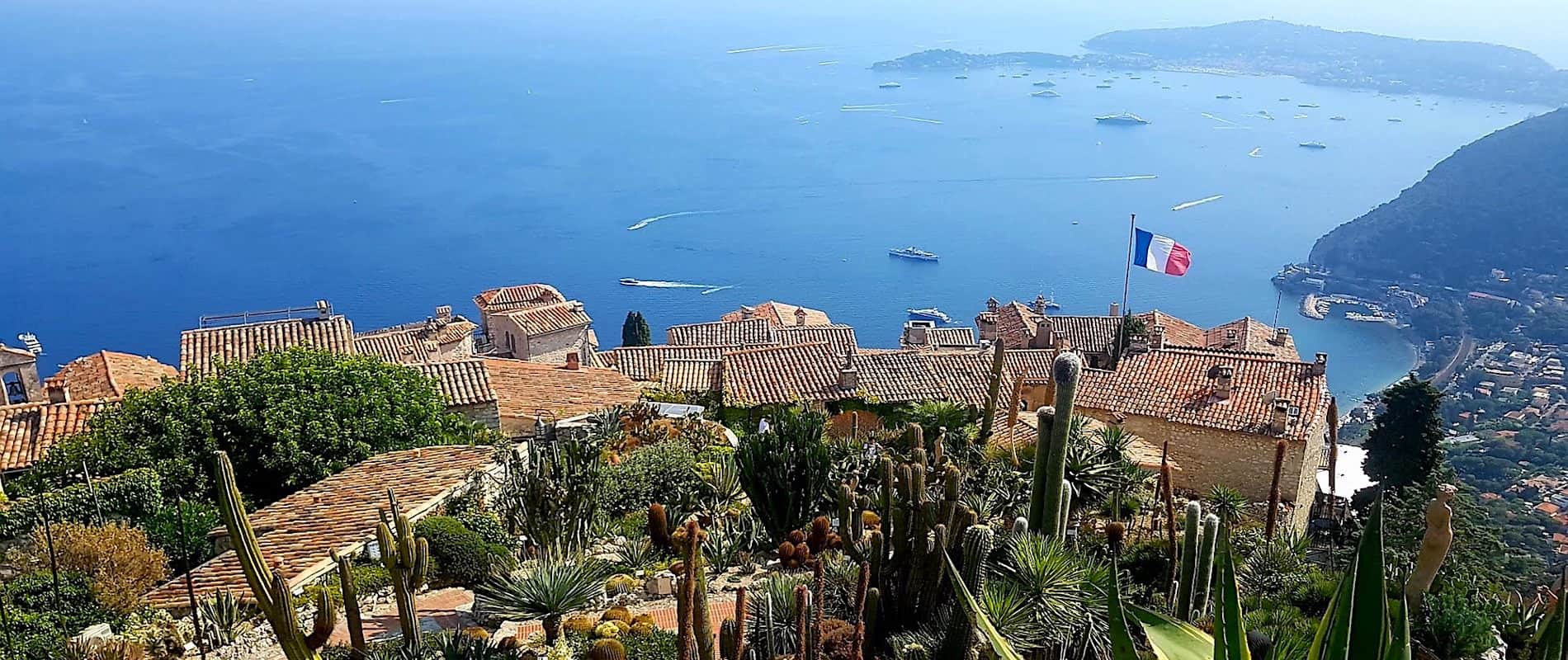
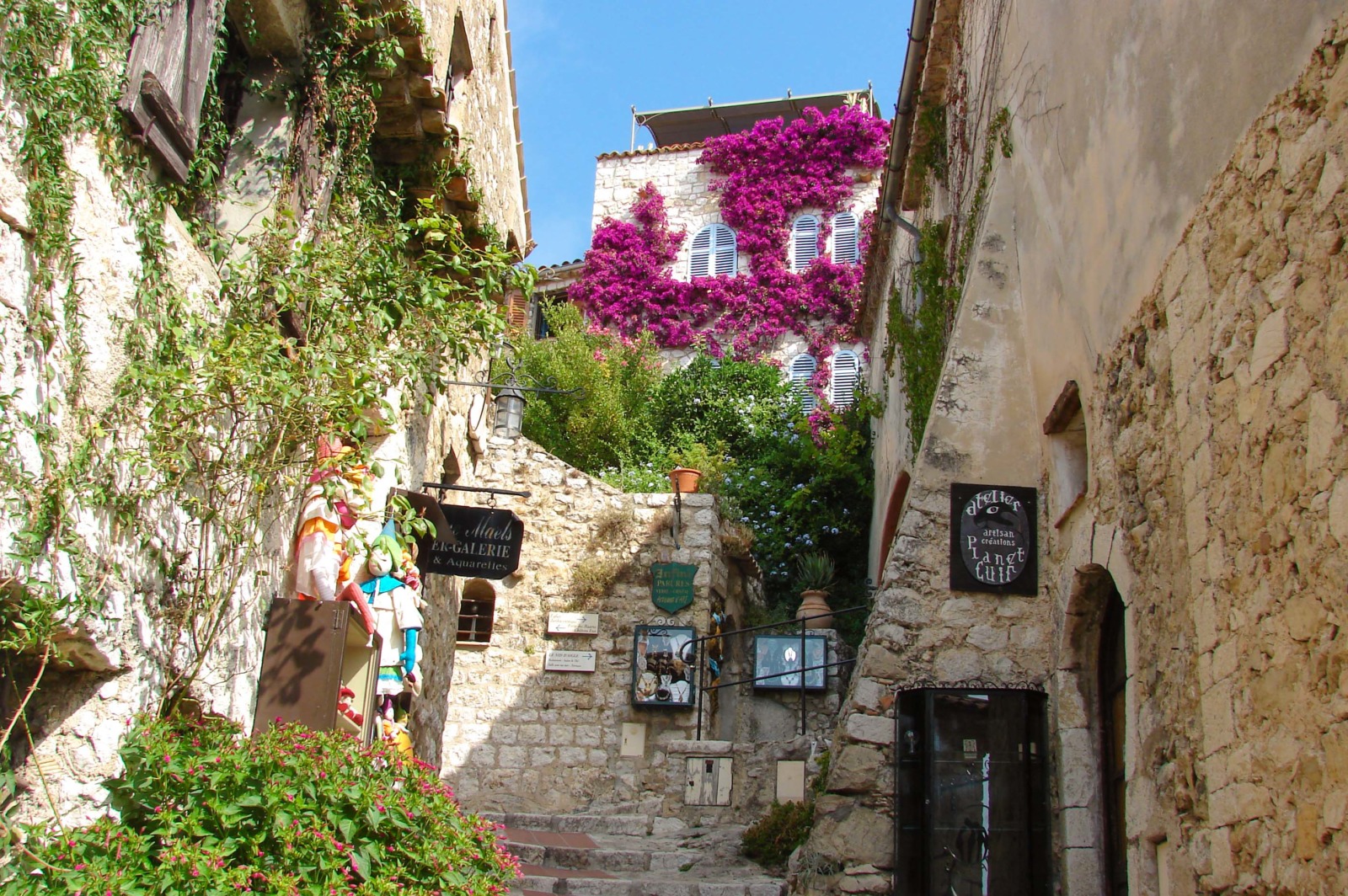
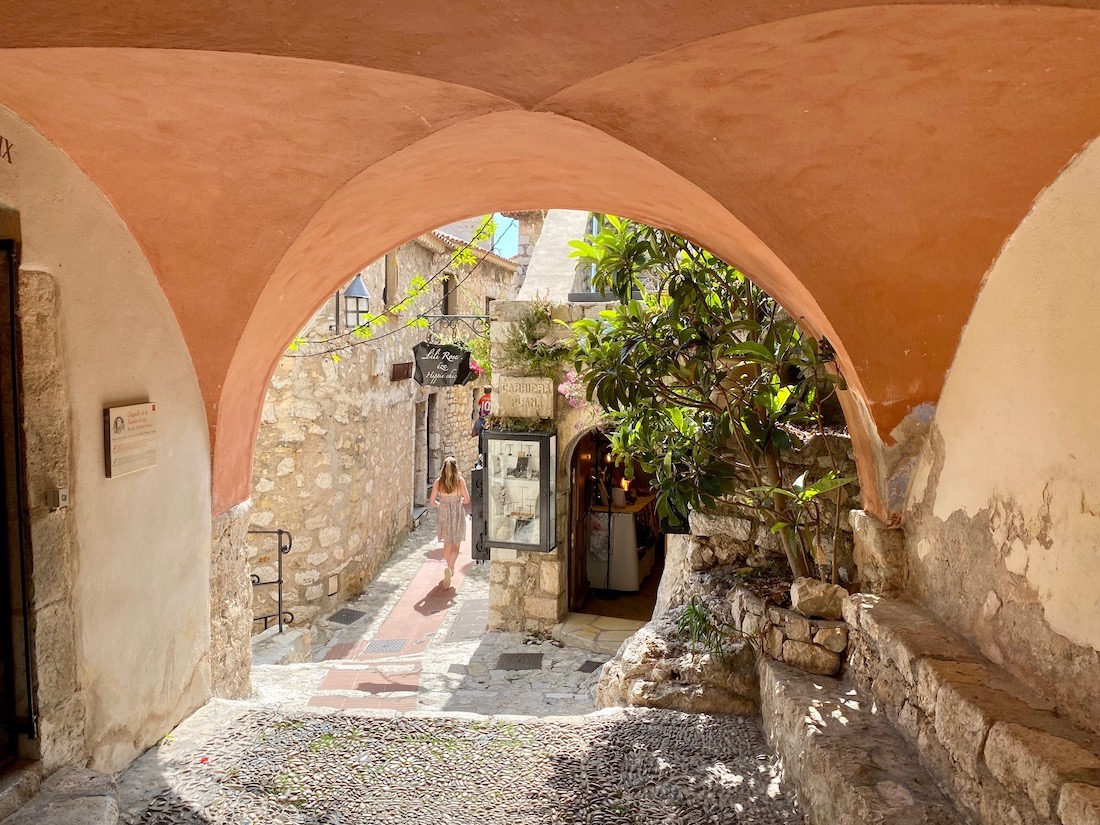
MOUGINS
Mougins is a hilltop village situated a few kilometres inland from Cannes in the direction of Grasse, in the Alpes-Maritimes department of Provence, one of many picturesque medieval perched villages that are found all across Provence.
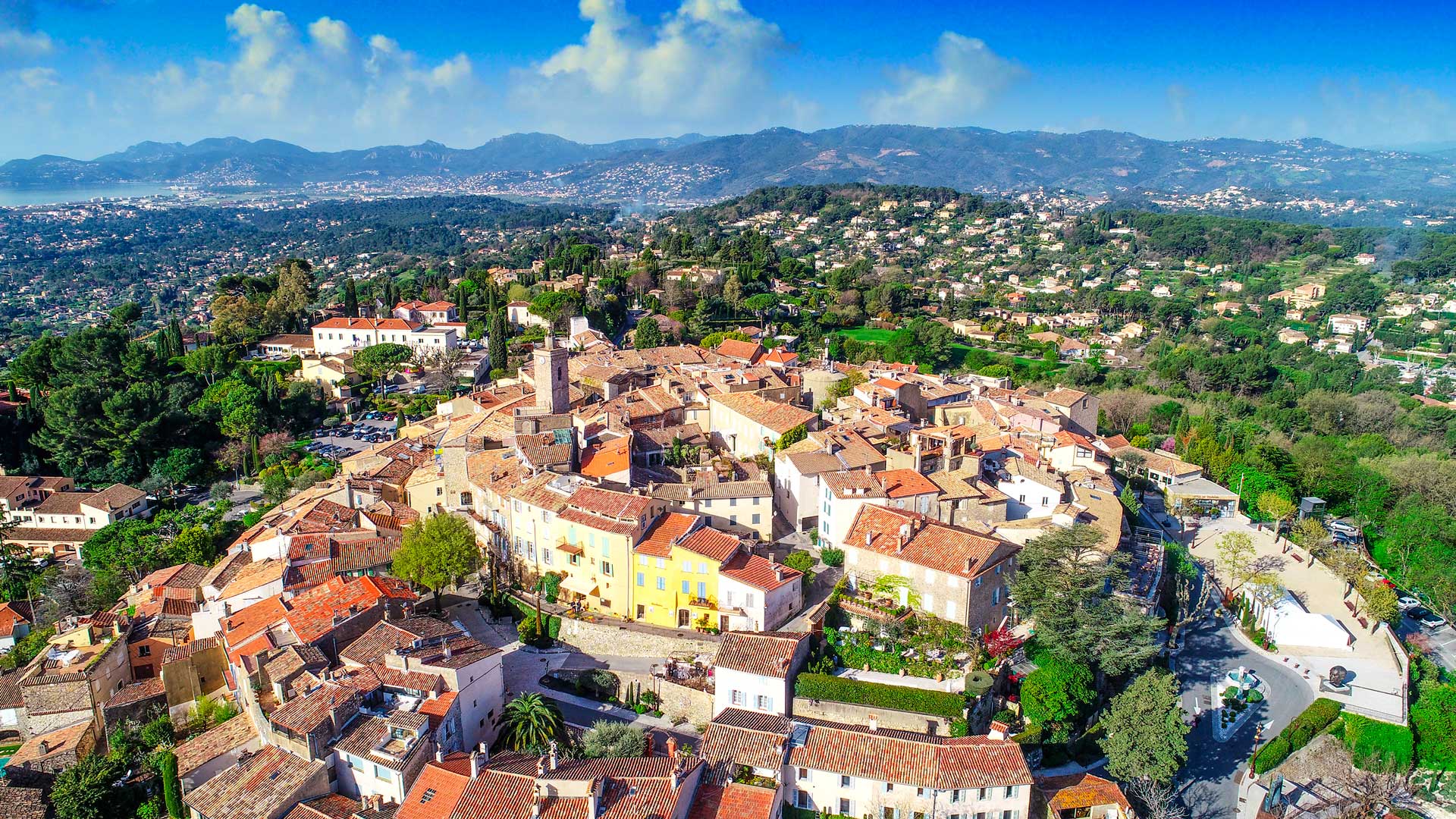
Mougins, a tiny jewel of a hilltop village —where Picasso lived his last twelve years—is located on the Côte d’Azur, just under seven kilometres inland from the Mediterranean Sea. The views of the lush countryside are magnificent, as are its fascinating Greco-Roman, culinary, and art legacies. Plus it offers easy access to both snazzy Cannes, as well as charming Valbonne.
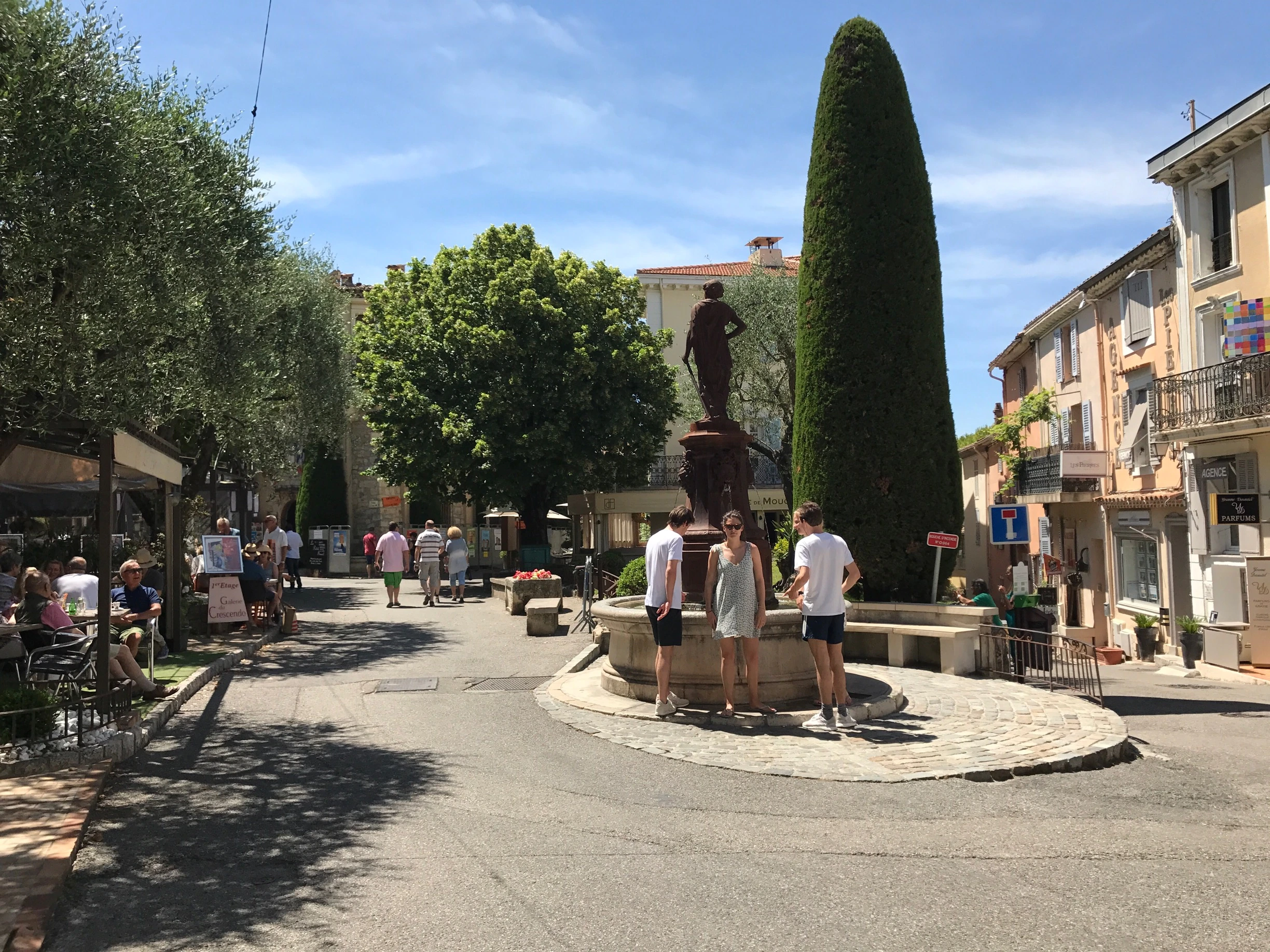
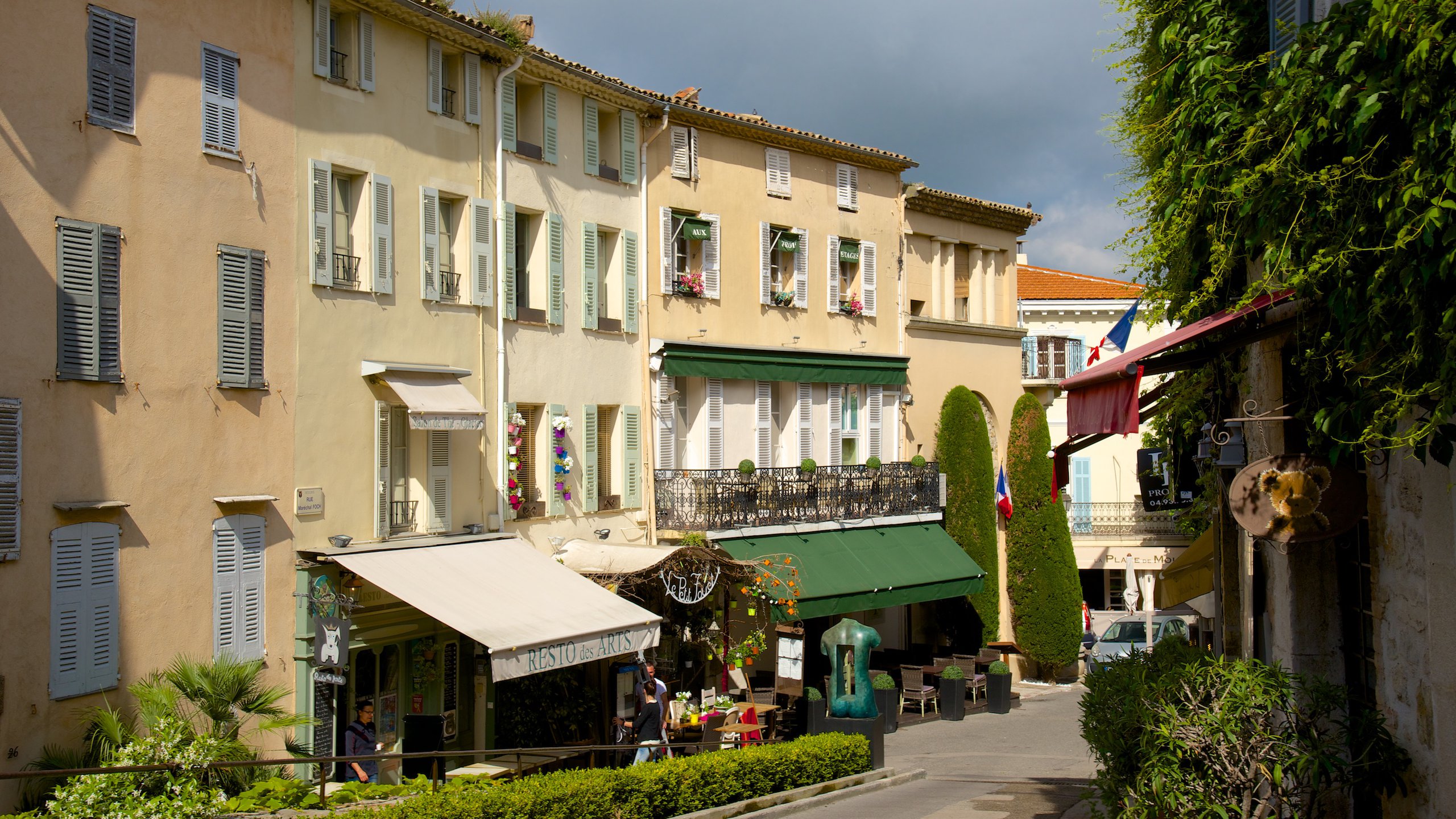
The village has a historic centre that is very pleasant to explore with narrow cobbled alleys to stroll along, heading off from the village centre and its central fountain. You will discover various other fountains and statues as you explore Mougins, and numerous other small architectural highlights, both remnants from the past and more modern creations.
The village has given a high priority to greenery, and there are many flowers, trees and pretty garden areas, all adding further to the charm and helping Mougins blend into the countryside. Indeed the combination of narrow streets along with the explosion of pots of plants and art galleries spreading into the alleys means you are sometimes positively hemmed in.
The views from Mougins across this surrounding countryside and out across Cannes Bay are as impressive as the village itself.
There are also many art galleries , restaurants and cafes in the town. Mougins attracts the rich and famous who live hidden in the surrounding hills, and as a result the town is well known for its very impressive selection of high quality restaurants.
Outside the circular spiral of streets that comprise Mougins old town there are broader streets containing cafes etc and views across the countryside to the Mediterranean.
Mougins museums and art galleries
In the heart of Mougins you visit many exceptional museums that combine sculptures and artefacts from classical times with paintings and other artworks from modern times by artists such as Picasso, Matisse, Rodin and Damien Hirst that were influenced by the classical arts.
Part of the reason why Mougins is so focussed on art is that Picasso spent the last years of his life (from 1961-1973) living just across the valley from Mougins, next to the Chapel Notre-Dame-de-Vie, and many other famous artists (and non-artists) have had homes here.
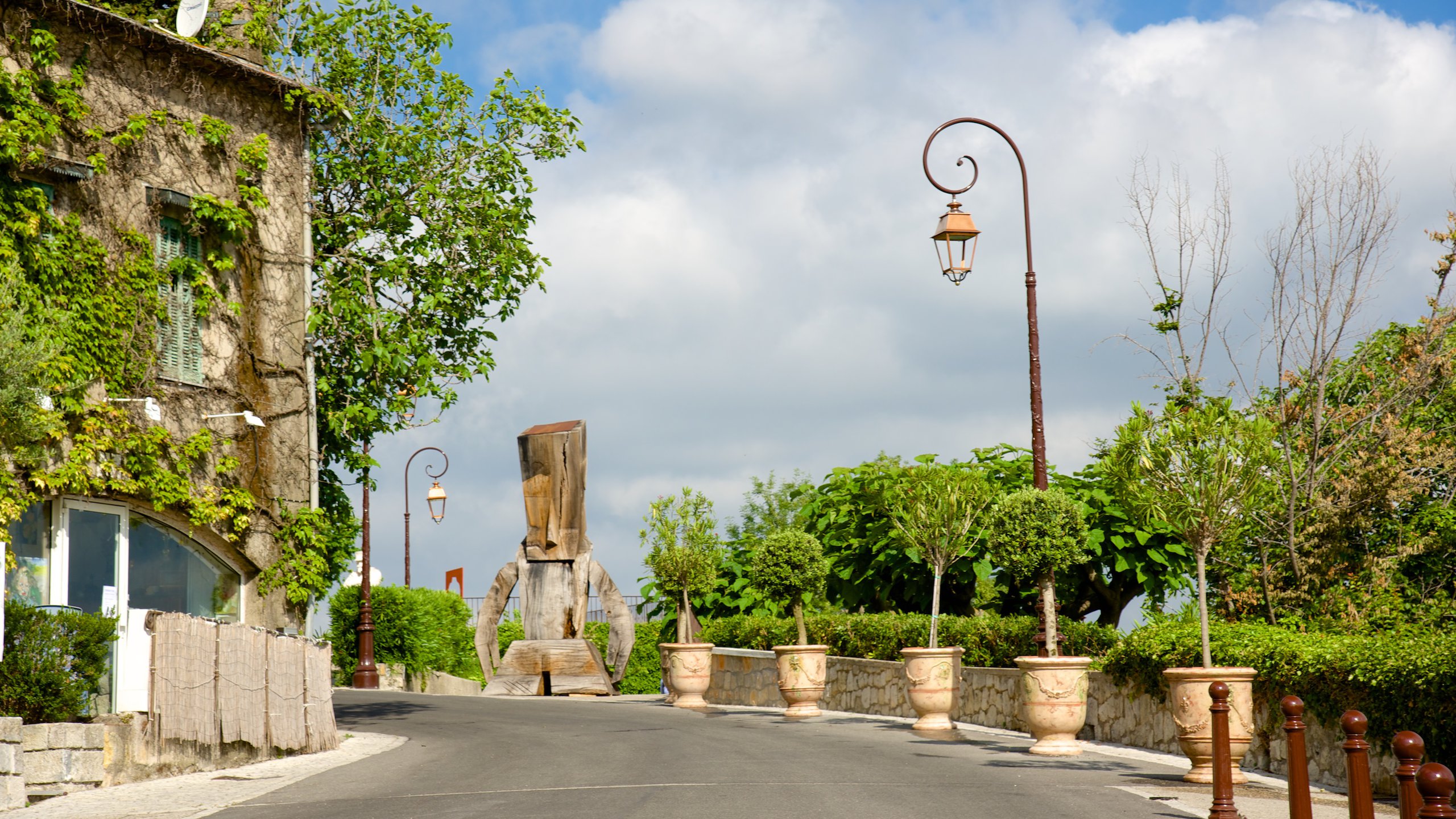
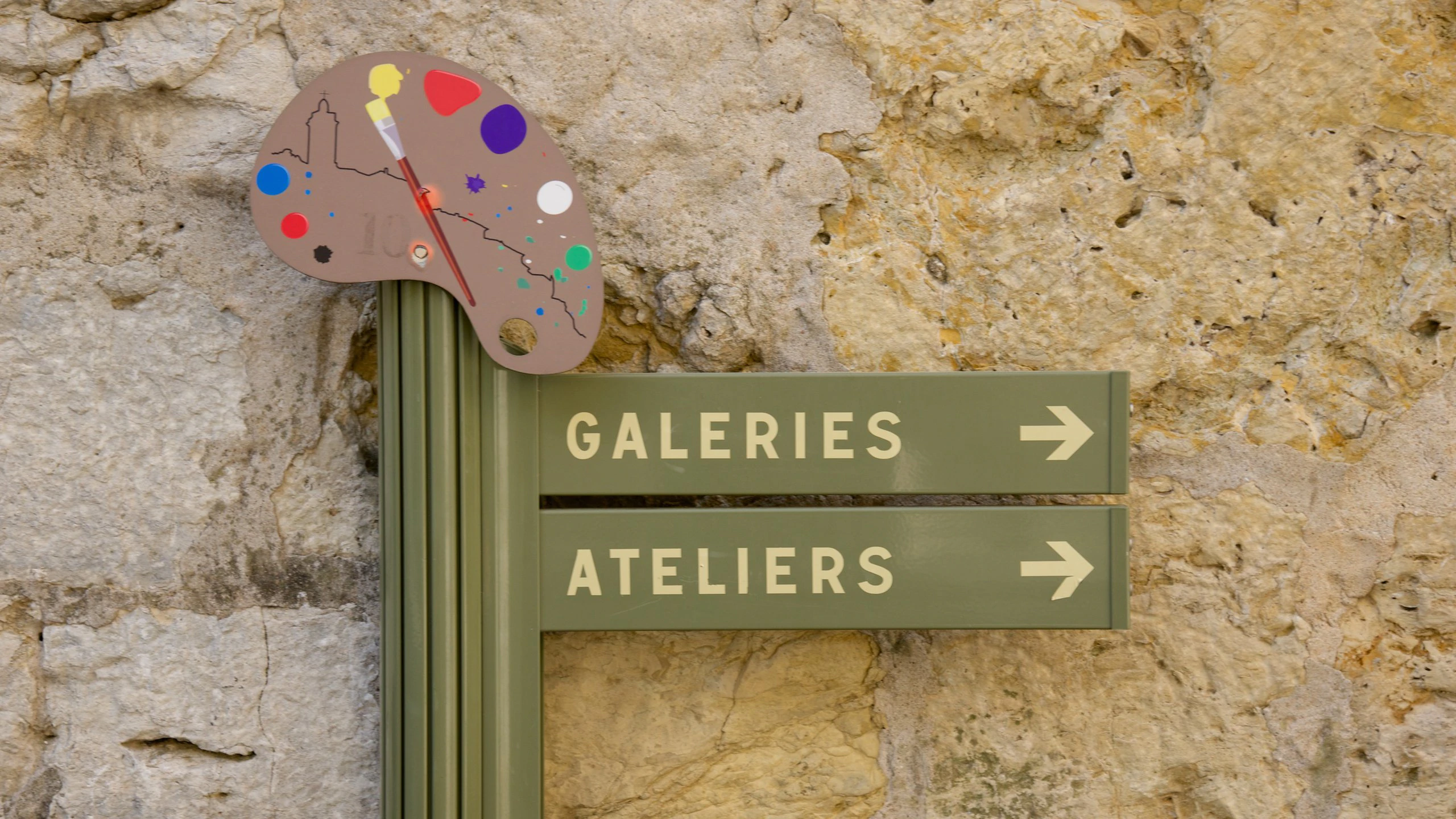
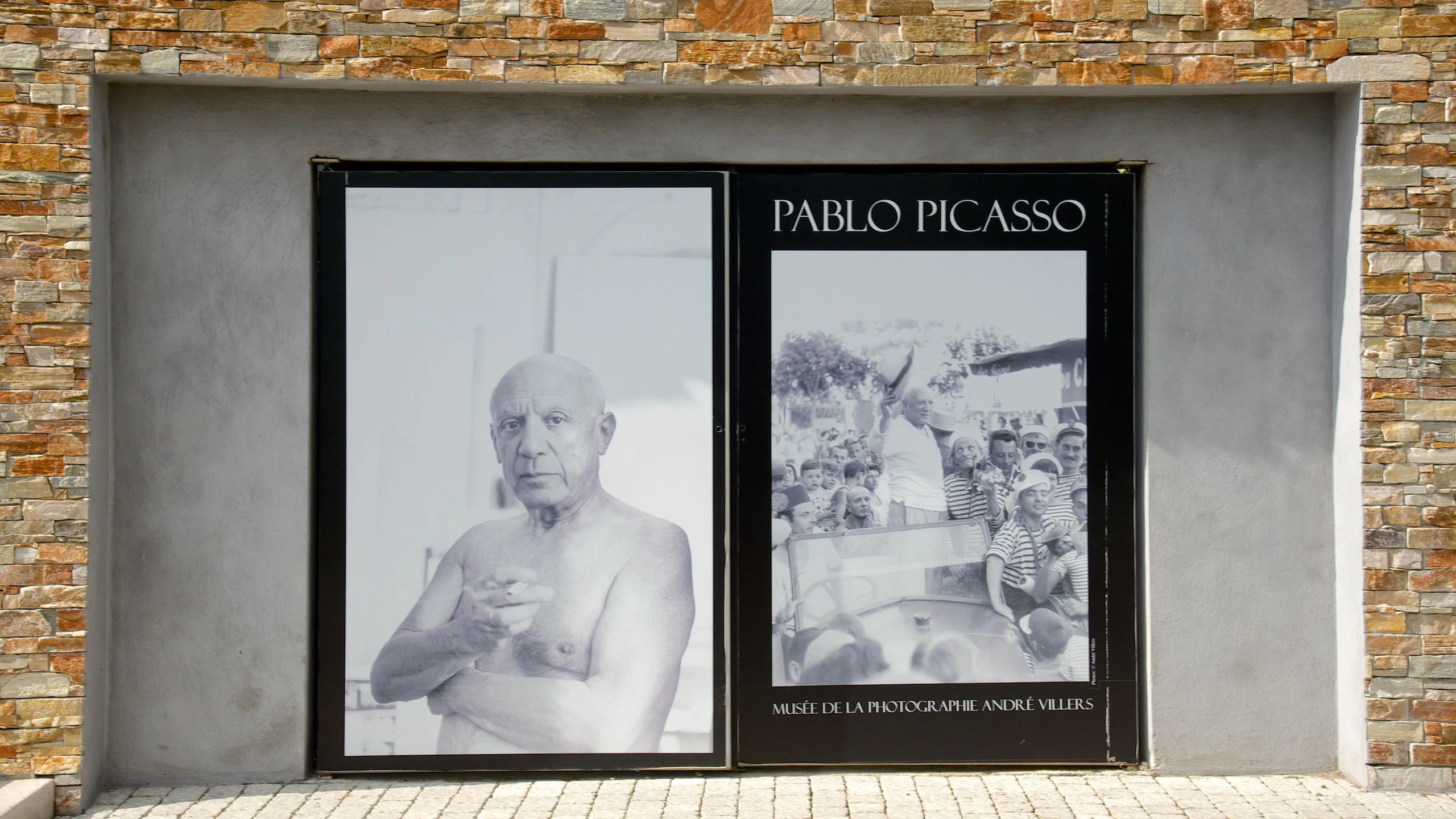
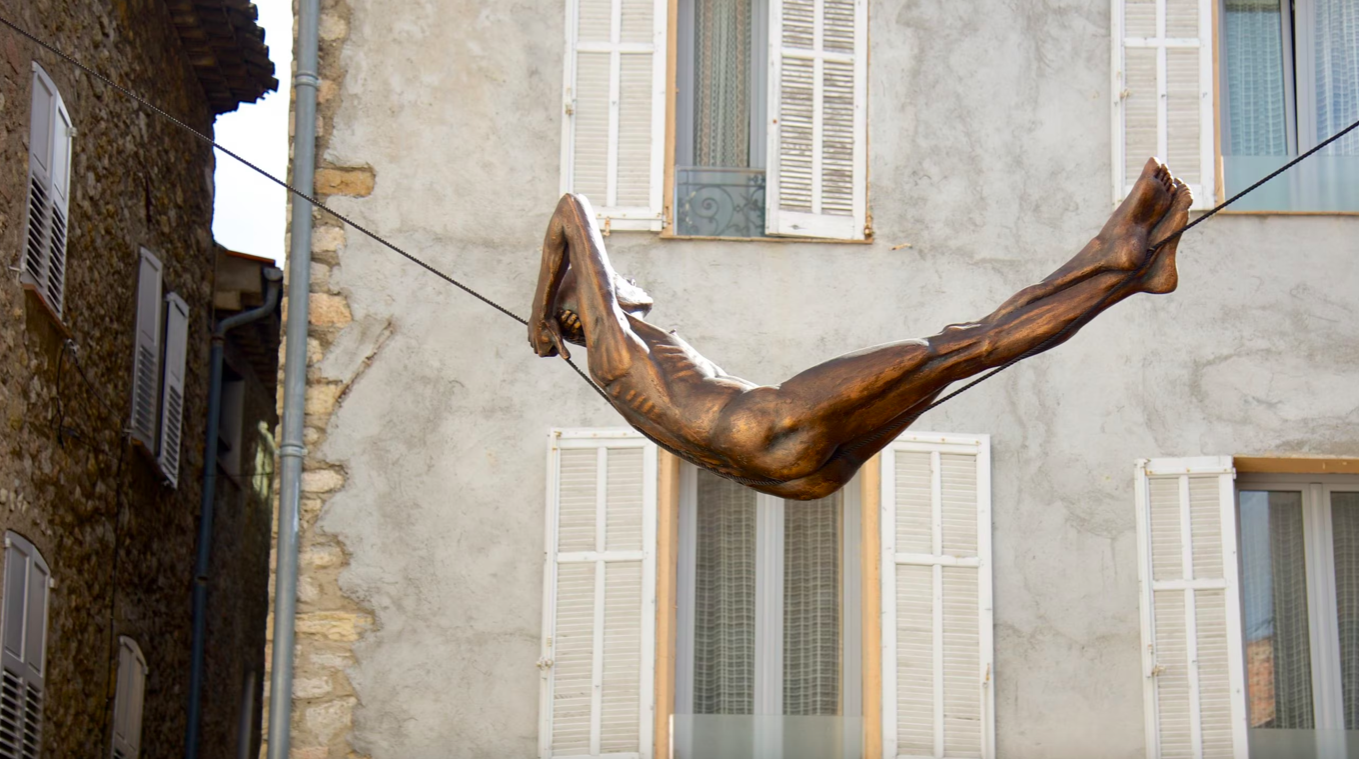
GRASSE
The World Capital of Perfumes
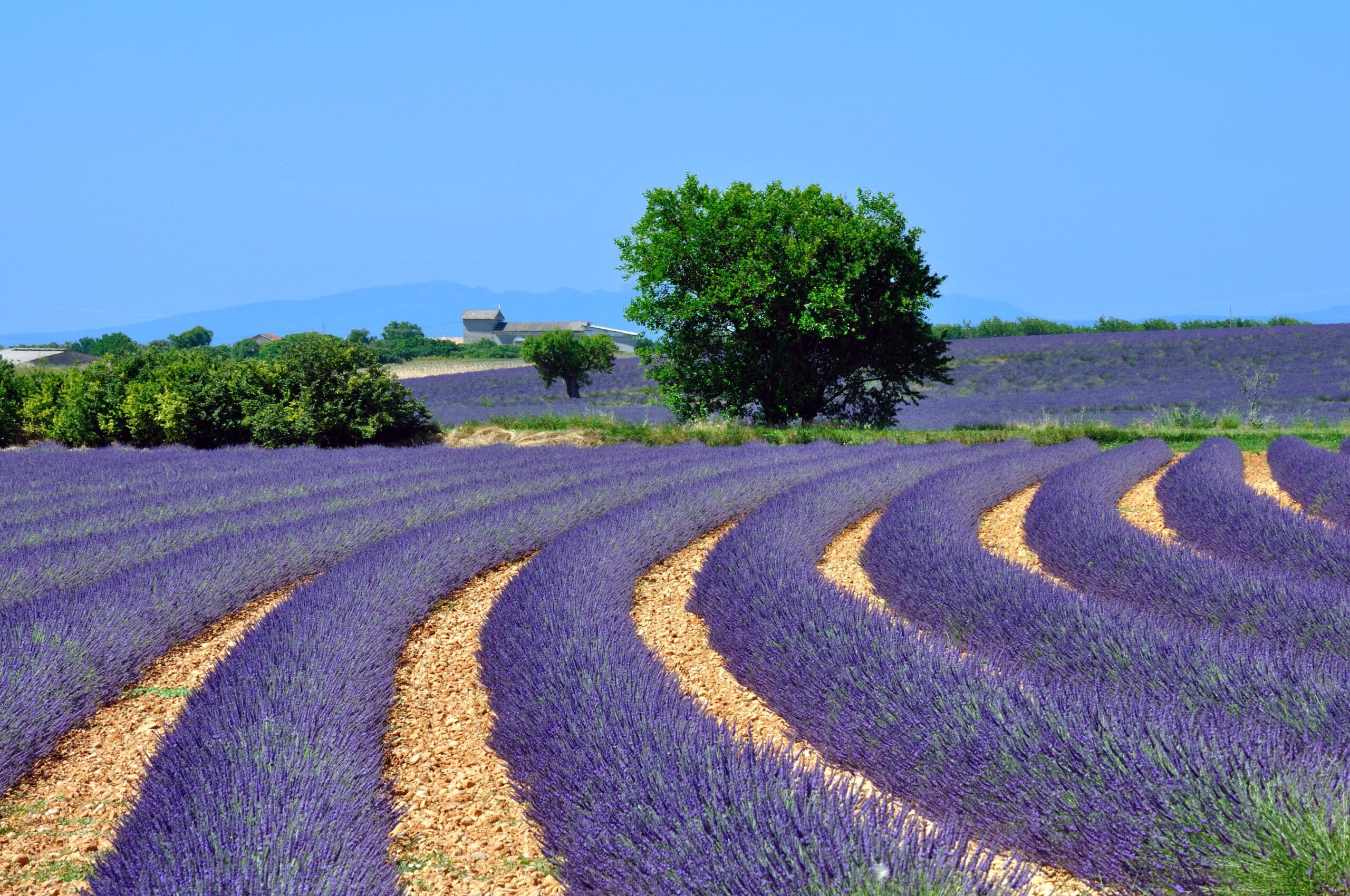
Grasse is a lively town in the heart of Provence in France. It is more precisely located on the French Riviera and is a very touristic town which is widely visited in the Provence Alpes Côte d’Azur region. Grasse is one the favourite cities of tourists and locals thanks to its many advantages. The town has the privilege to be situated only 15 kilometres from Cannes and therefore from the Mediterranean Sea.
Grasse is an easily accessible city and the 4th biggest city of the Alpes-Maritimes in terms of population.
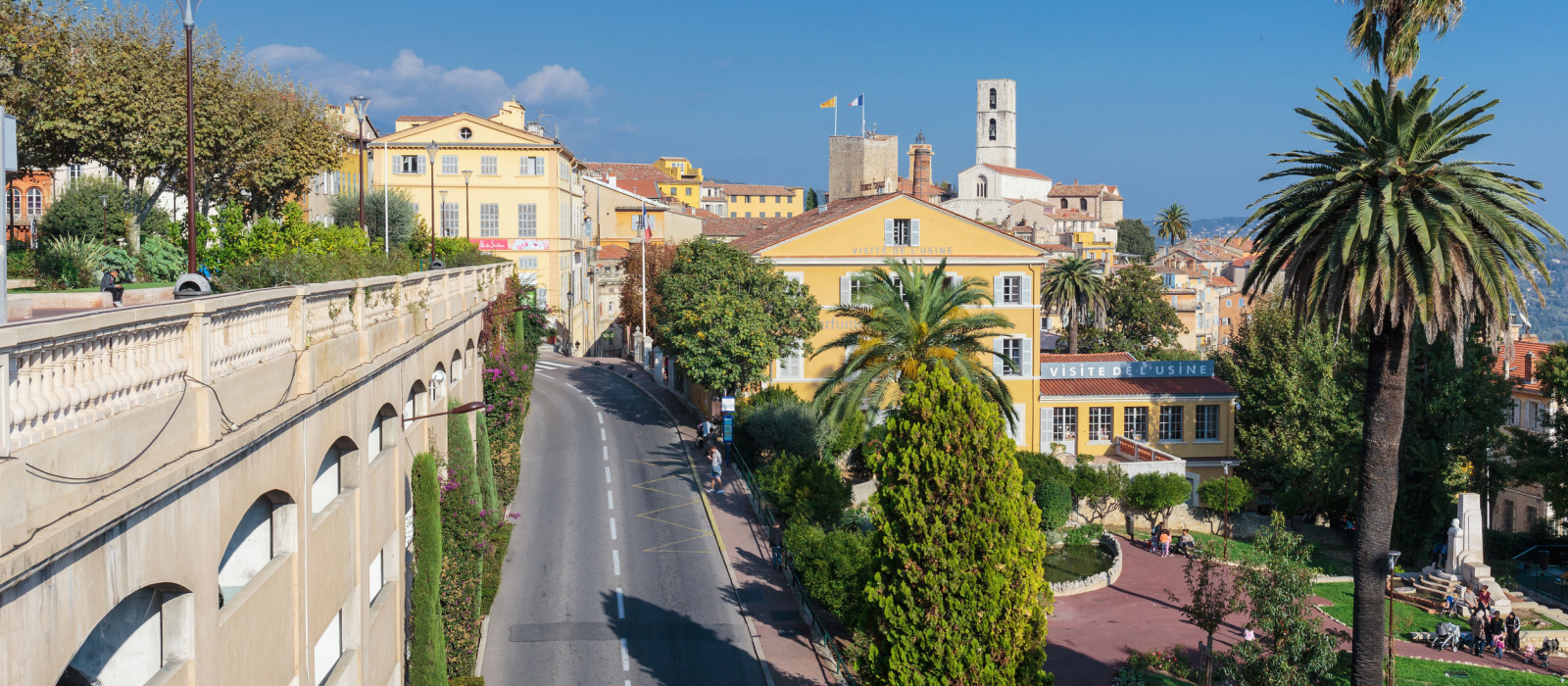
Grasse is also a hymn to delicate smells. Indeed, the town is the world capital of perfumery. When one thinks of Grasse, one thinks of Fragonard, the small perfume shops that line the old town and the authentic know-how. The reputation of Grasse nowadays crosses borders.
The City of Perfume
In Grasse you will smell a thousand smells: like those of the Fragonard perfumery for example. According to the writer Francis de Croisset, Grasse is the only city in the world where the word factory is poetic. And this is due to its perfume factories and its gardens of perfumed flowers! Grasse offers many activities to awaken the senses, perfumes and scents of the Pays de Grasse, as well as creative, fun, educational and recreational activities for individuals wishing to learn more about the world of perfumery. These are the kind of activities you don’t get to do every day!
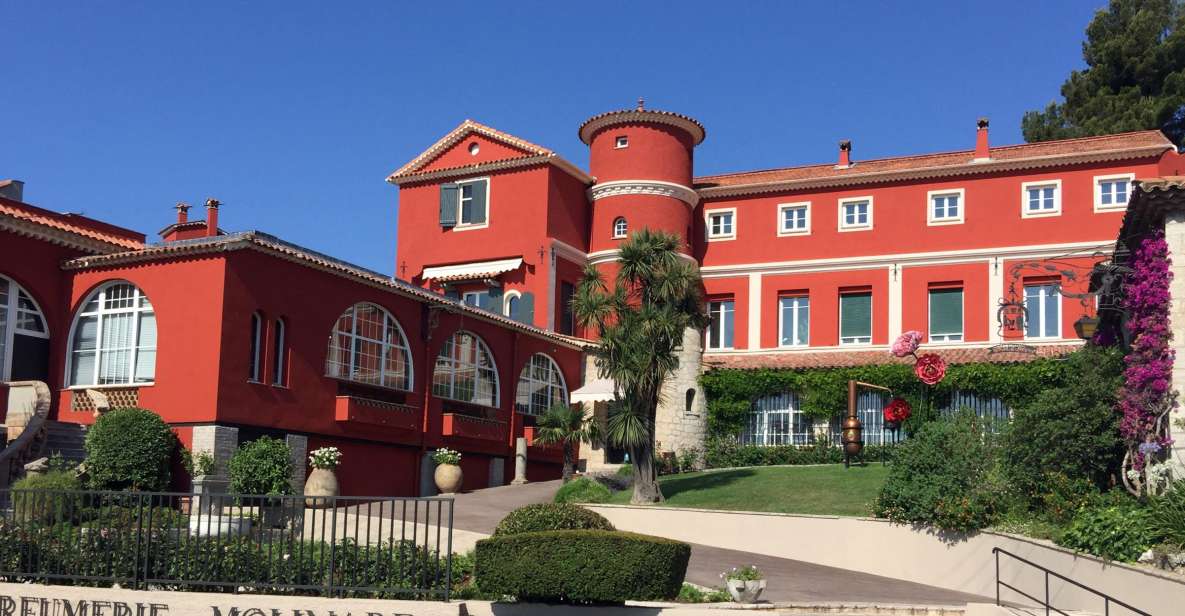
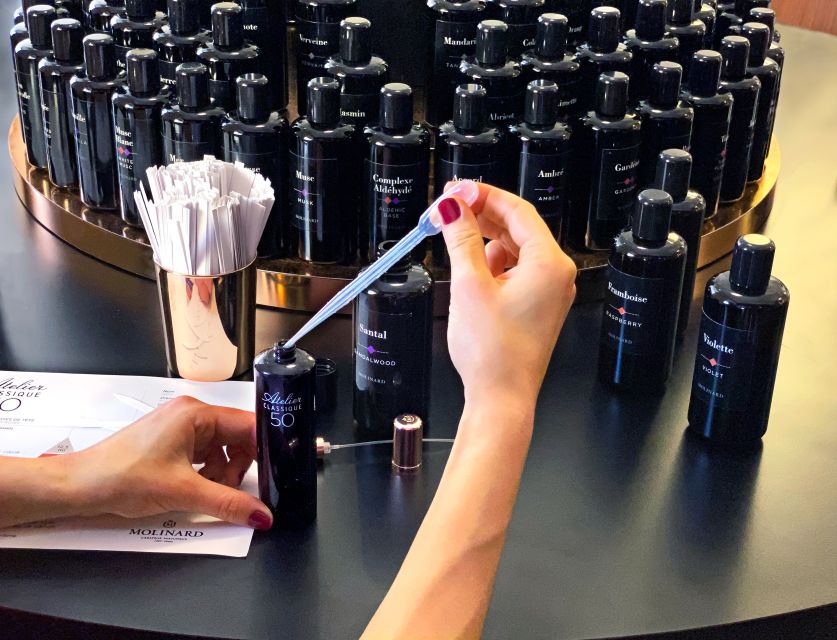
Chateauneuf / Grasse
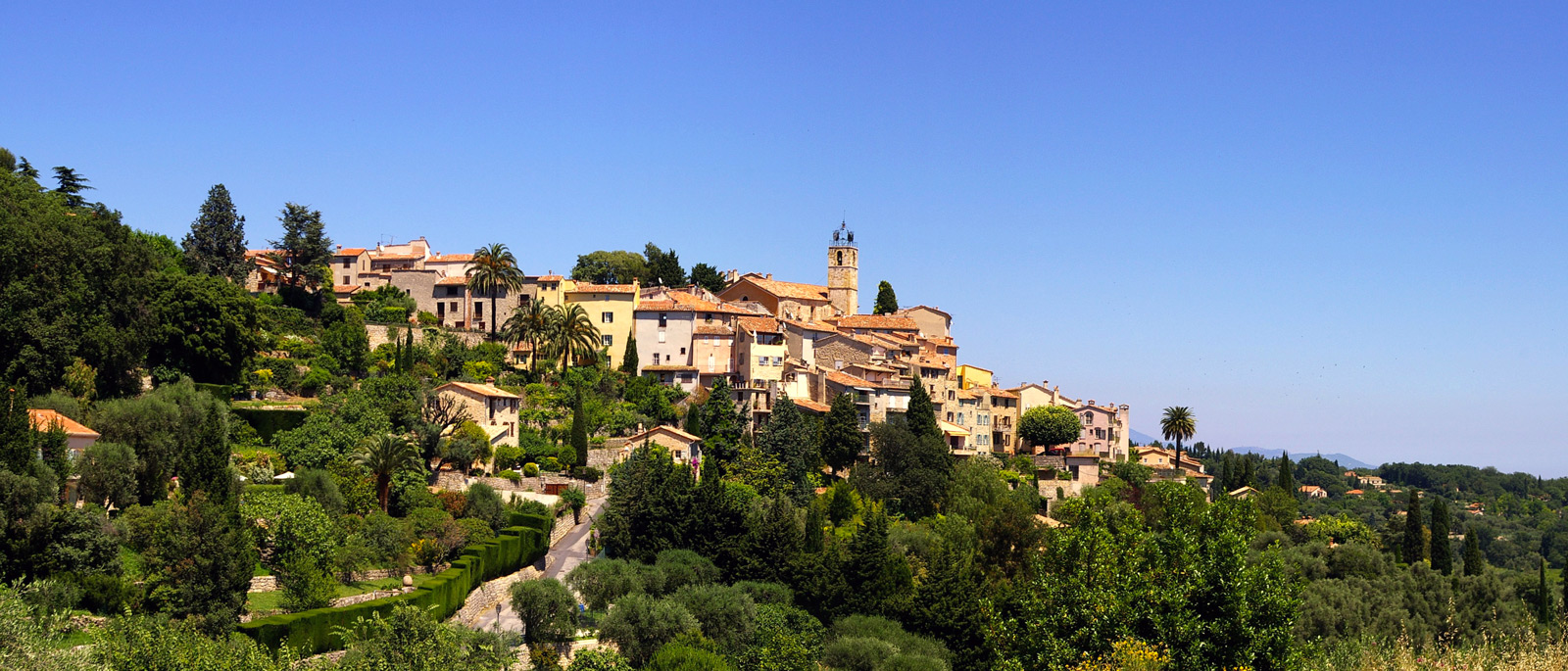
The name Châteauneuf means “new castle” and is a popular name for a town. There are 32 in total in France, spread all over the country from Brittany in the west to Provence in the south. Dating back a thousand years, all these “new” castles are built in strategic sites noted for their defensive features: by the sea, high in the mountains, next to rivers, on promontories etc.
The village is located 20 km from Cannes, 31 km from Nice and 6 km from Grasse.
The village of Chateauneuf de Grasse is listed as one of the historic sites in Alpes Maritimes.
Attached to the slopes of a hill, Chateauneuf de Grasse looks over the surrounding countryside with the Bay of Cannes in the distance.
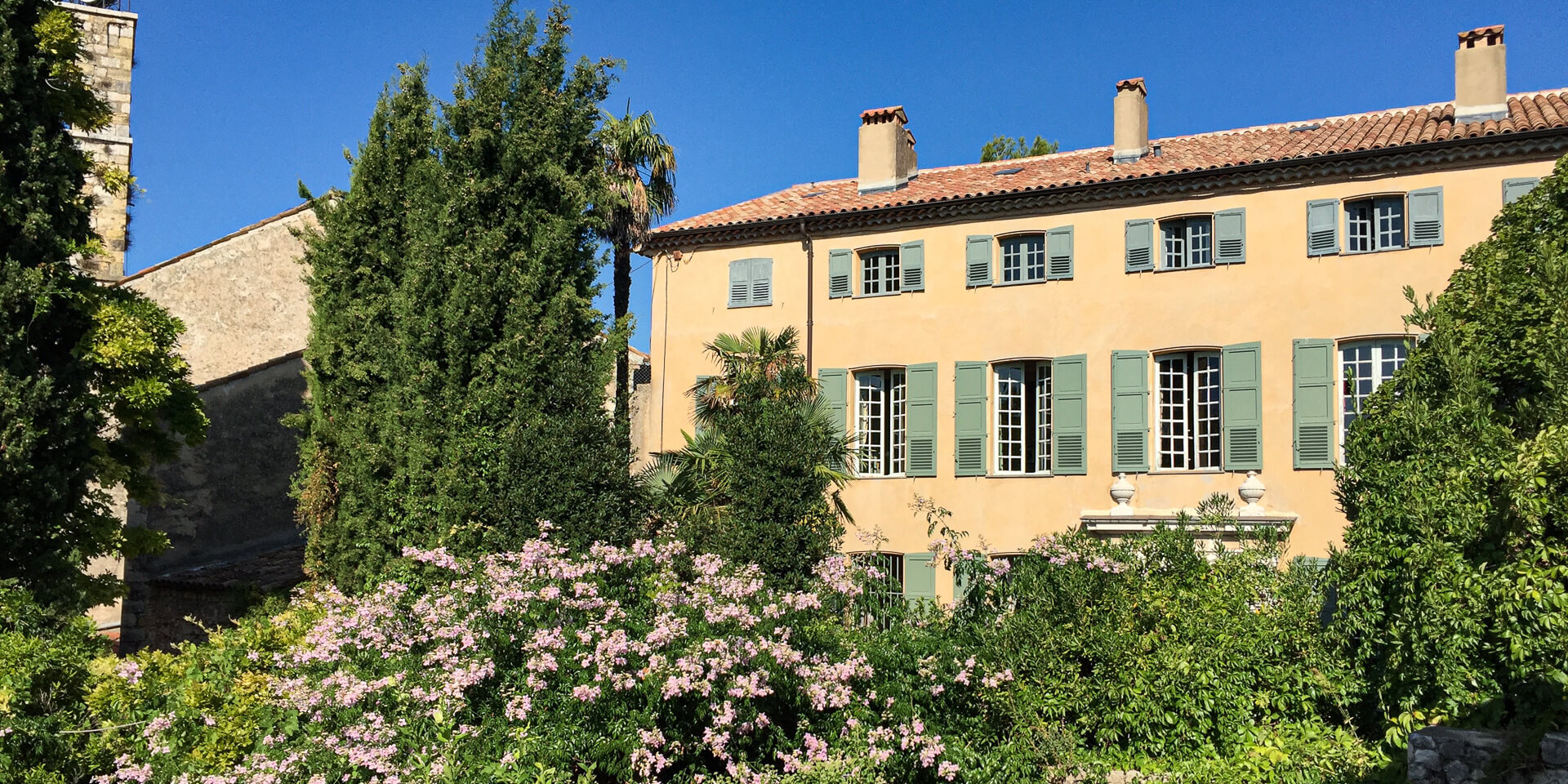
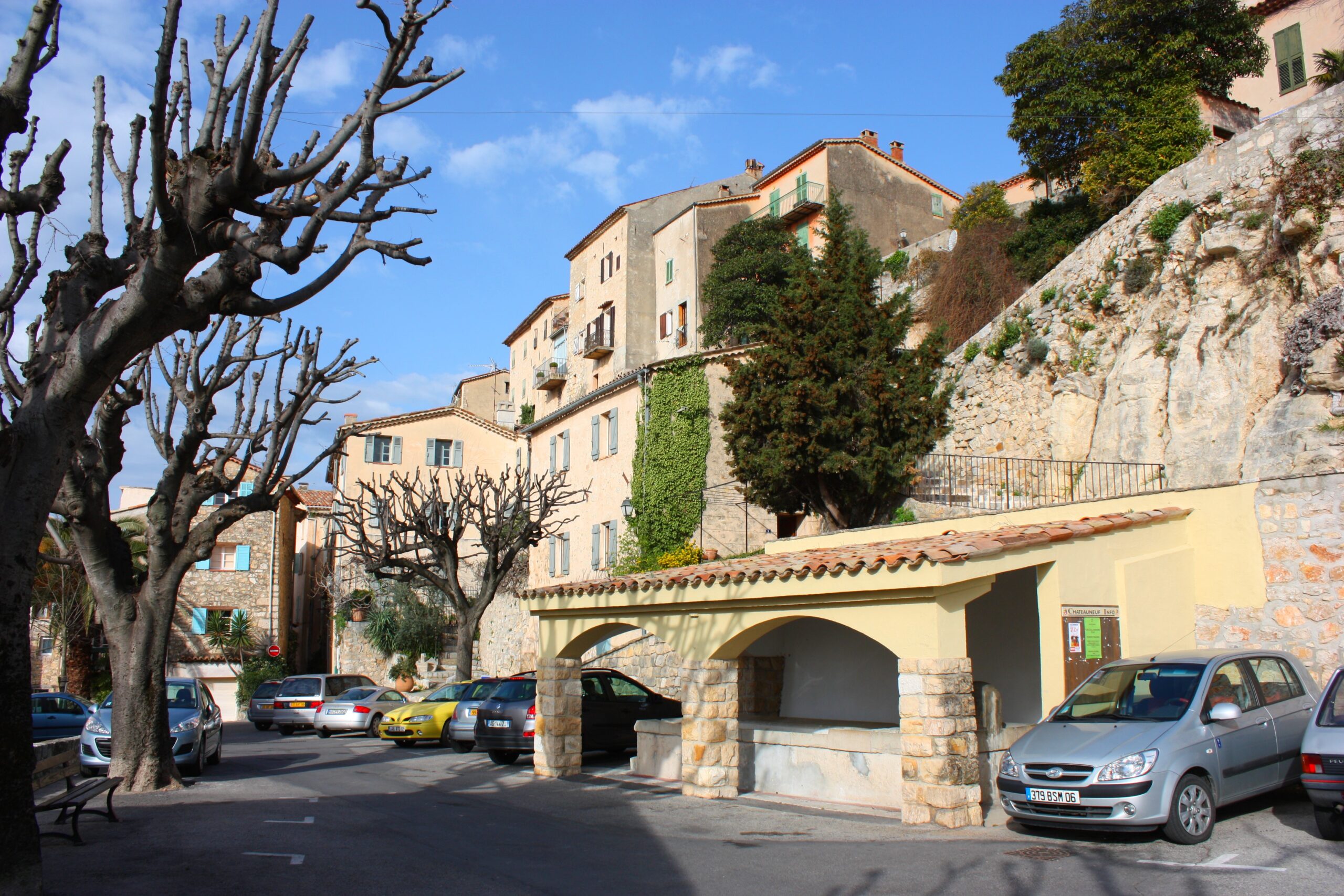
VALBONNE
Peaceful and Picturesque Provence Town
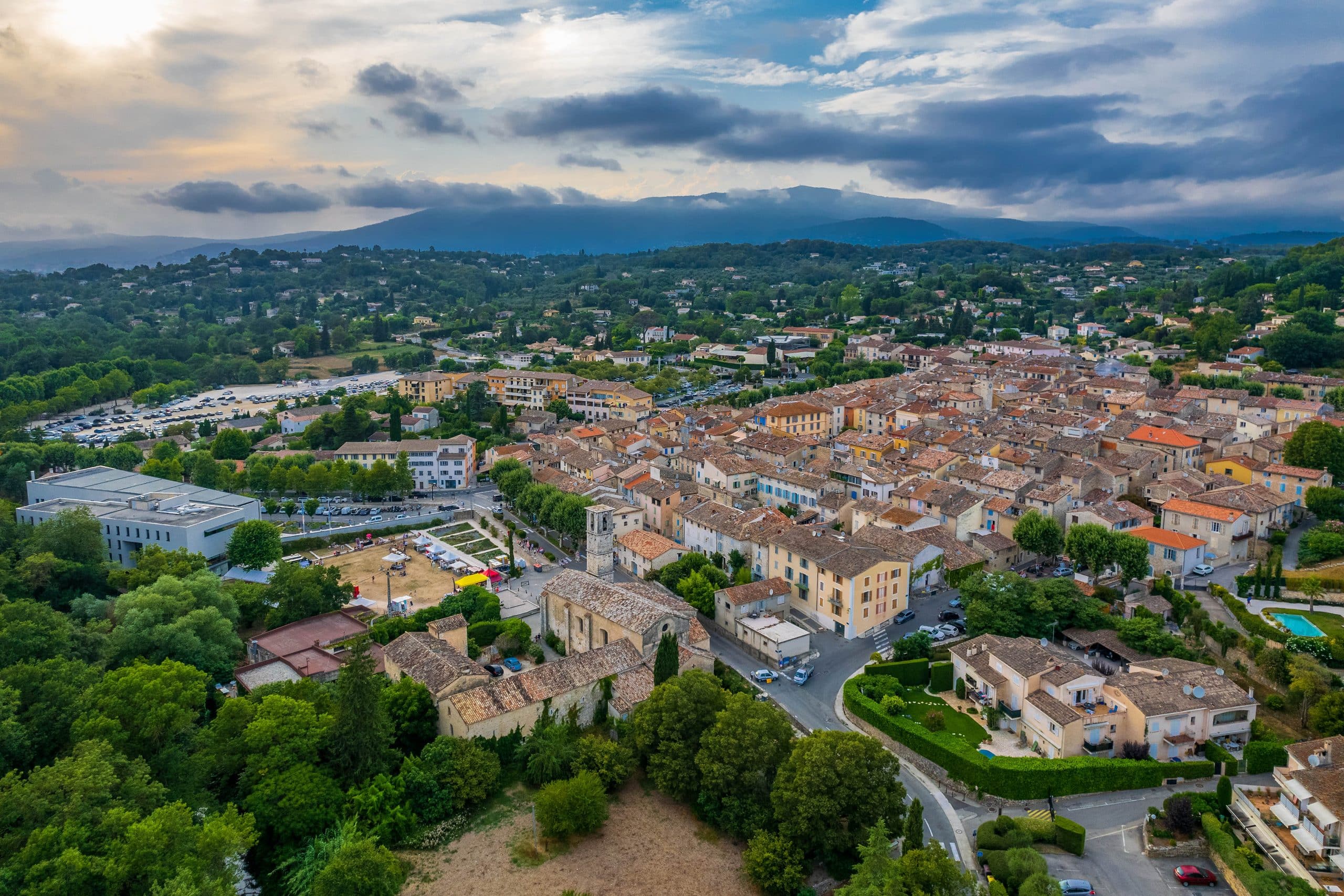
Located just a short drive from the bustling coastal towns of Cannes, Antibes and Nice, Valbonne is a charming village that has managed to retain its old-world charm and peaceful atmosphere.
Nestled in the hills of the French Riviera, this picturesque village boasts beautiful cobblestone streets, charming shops and cafes, and stunning views of the surrounding countryside.
Valbonne is a village steeped in history and culture, with roots dating back to the 16th century.
There’s an enchanting appeal to Valbonne that sits perfectly between ‘medieval charm’ and ‘Riviera chic’. Located in the rolling hills behind Antibes, Valbonne is a desperately pretty 16th century town of cobbled streets and fashionable boutiques, sun-drenched squares and ancient abbeys. What makes Valbonne so special is that it has the feel of a living, breathing Provencal village rather than a tourist attraction, with its village squares dotted with shady plane trees and boules players, and its bustling pavement cafes full of locals enjoying the good life under the Mediterranean sun.
The village was founded by monks who were seeking refuge from the religious wars that were raging throughout France at the time.
Today, visitors to Valbonne can explore the historic center of the village, with its beautiful stone buildings and quaint cobblestone streets.
The village is also home to a number of cultural attractions, including art galleries and museums.
One of the things that makes Valbonne so special is its stunning natural beauty.
The village is surrounded by hills covered in pine forests, olive groves, and fields of lavender, making it a popular destination for nature lovers.
Visitors can take a leisurely stroll through the countryside, or hike one of the many trails that wind their way through the hills.
Valbonne is known for its charming shops and cafes, where visitors can find everything from handmade crafts to gourmet cuisine.
The village is home to a number of boutique shops, as well as a weekly market that offers a wide variety of fresh produce, artisanal cheeses, and local wines.
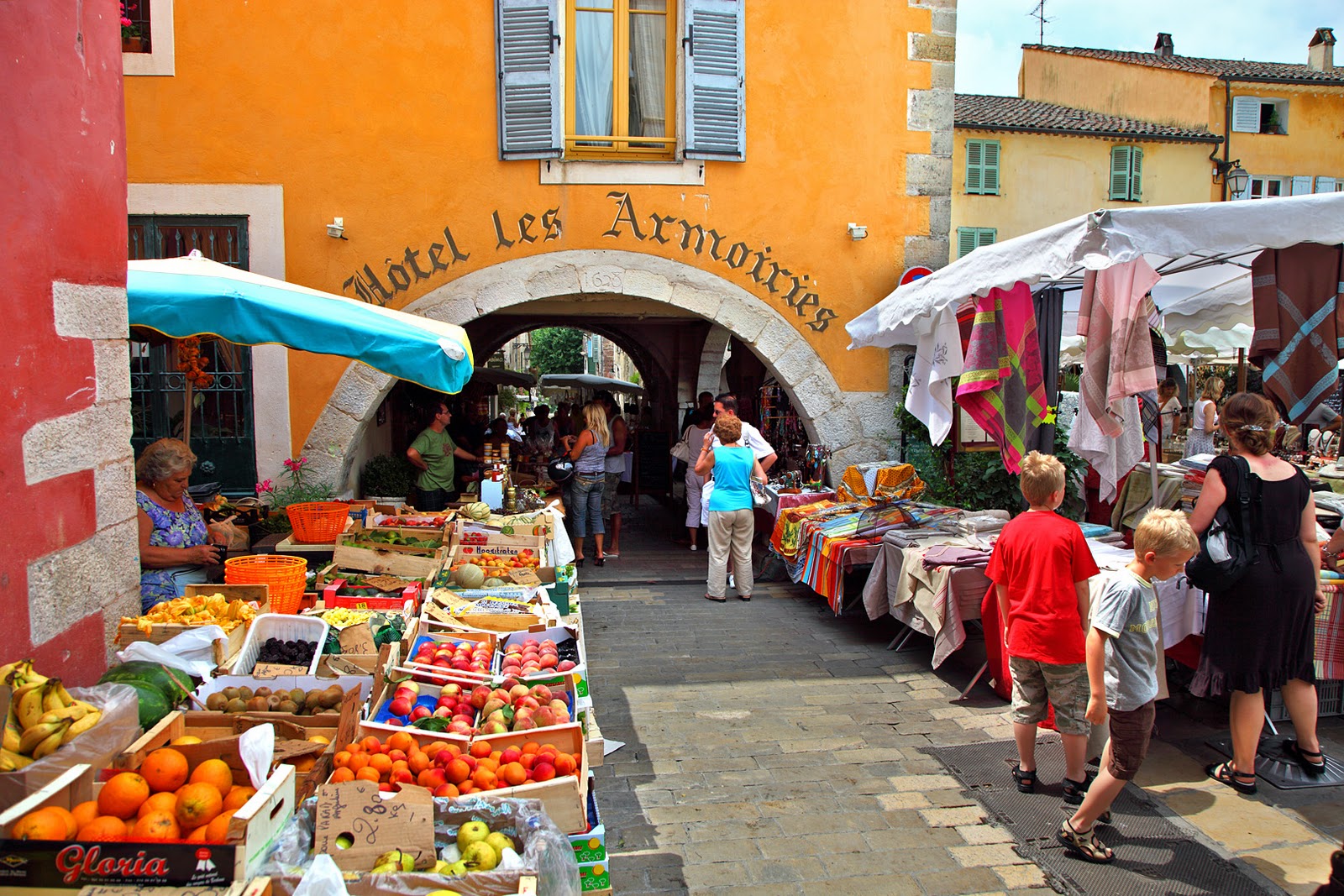
Visitors can also enjoy a meal at one of Valbonne’s many restaurants, which offer a range of cuisines, from traditional French fare to international dishes.
Throughout the year, Valbonne plays host to a number of events and festivals that showcase the village’s rich culture and traditions.
One of the most popular events is the Fete de la Saint Roch, which takes place every August and features a parade, live music, and traditional Provencal dancing.
The village also hosts a number of music festivals throughout the year, as well as cultural events, such as art exhibitions and theater performances.
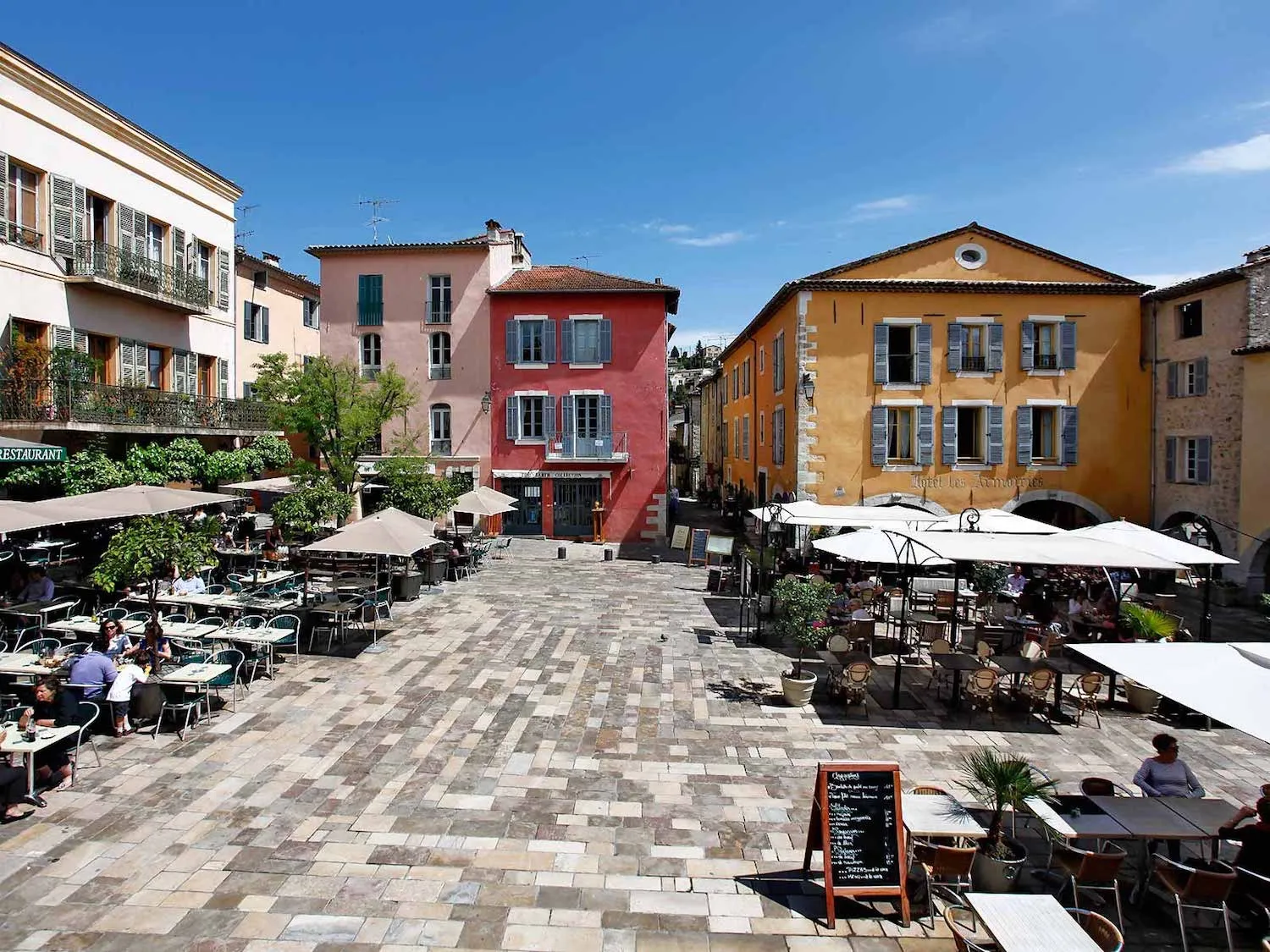
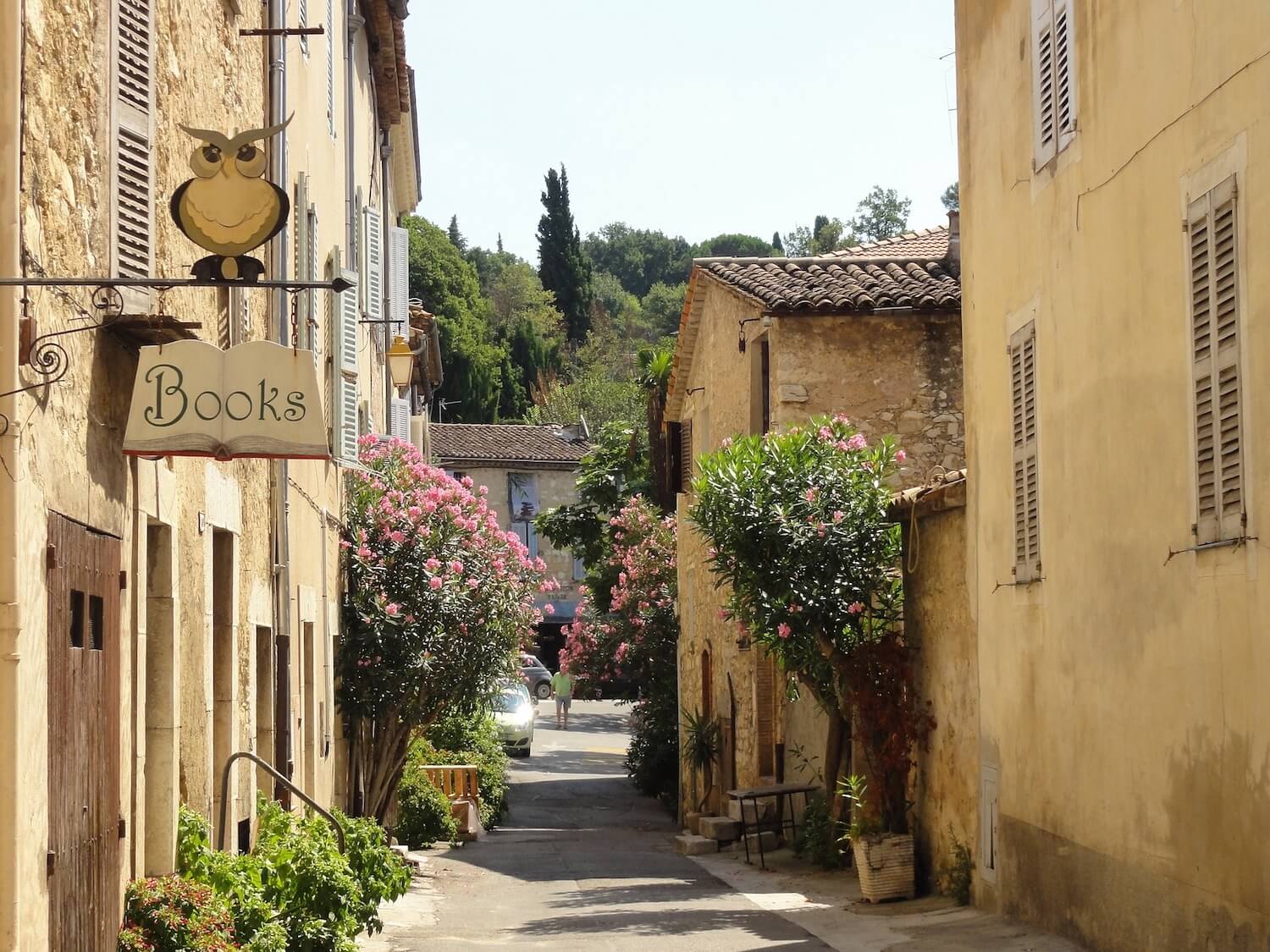
Valbonne is a hidden gem on the French Riviera, offering visitors a chance to experience the beauty and charm of a traditional Provencal village.
Whether you’re interested in history and culture, nature and outdoor activities, or shopping and dining, Valbonne has something to offer.
With its peaceful atmosphere, stunning natural surroundings, and rich cultural heritage, Valbonne is a must-visit destination for anyone traveling to the French Riviera.
OPIO
Most visitors come to Opio and its environs to get a taste of French countryside living. Grasse—the world’s perfume capital—is a stone’s throw away; olive-oil tastings and tours are an everyday delight; hiking the fields and olive groves is a worthwhile way to spend any day. History lovers should note traces of a medieval monastery in the Poudeirac quarter, not to mention the 15th-century olive-oil mill. For shopping, a collection of shops can be found up the hillside, technically out of town at Opio San-Peyre.
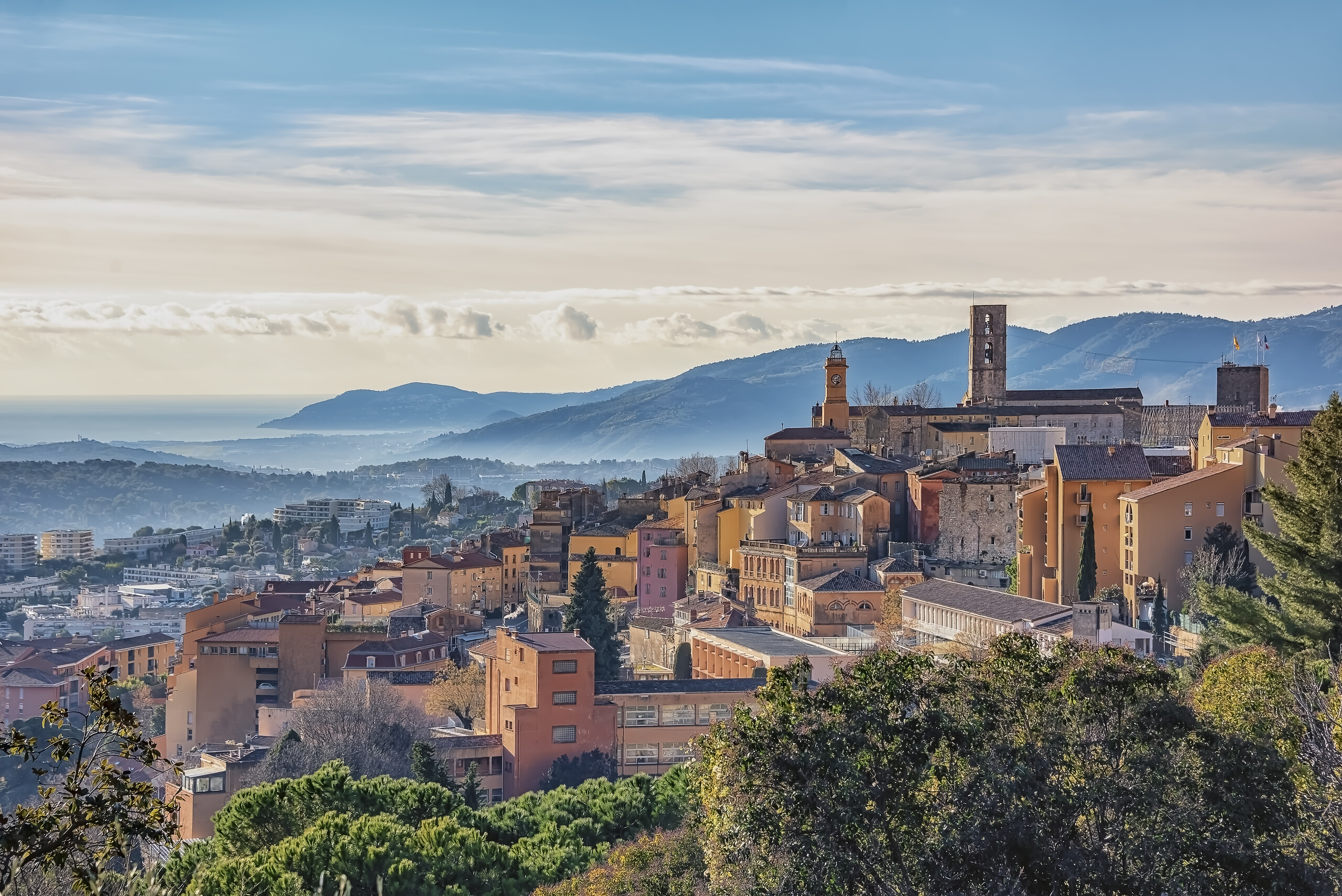
Opio is 31 km. from Nice, 8 km. from Grasse and 18. km from Cannes.
Thanks to an exceptional micro-climate, roses and jasmine are cultivated here for the Grasse perfume industry, while the Grande Bastide olive grove produces a delicious olive oil that you can buy at the Opio olive oil mill, one of the few such mills still operating in the region. It dates back to the 15th century.
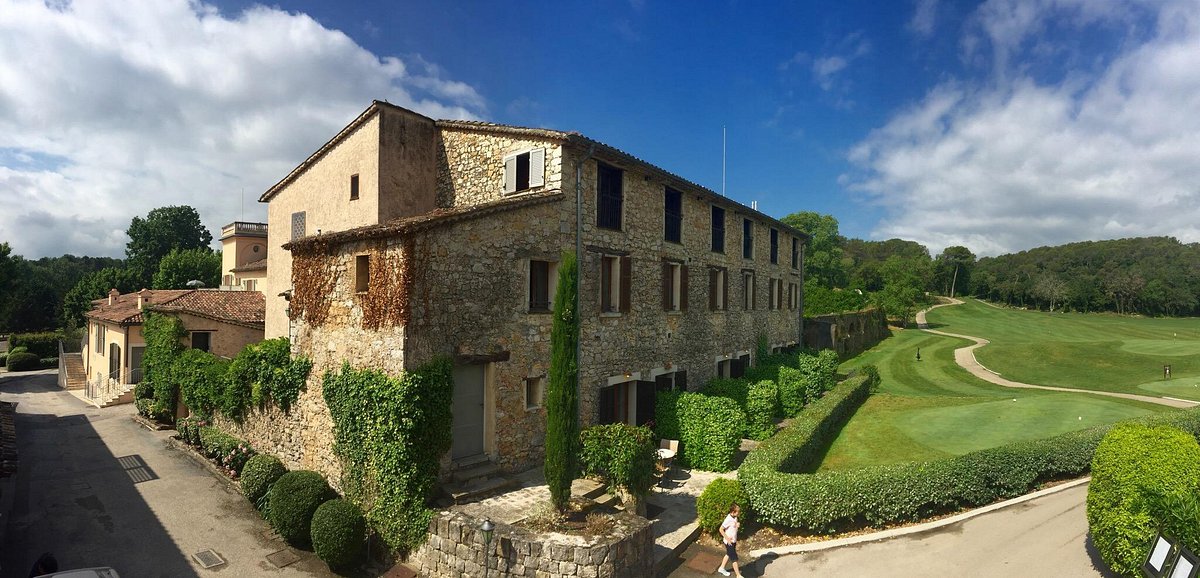
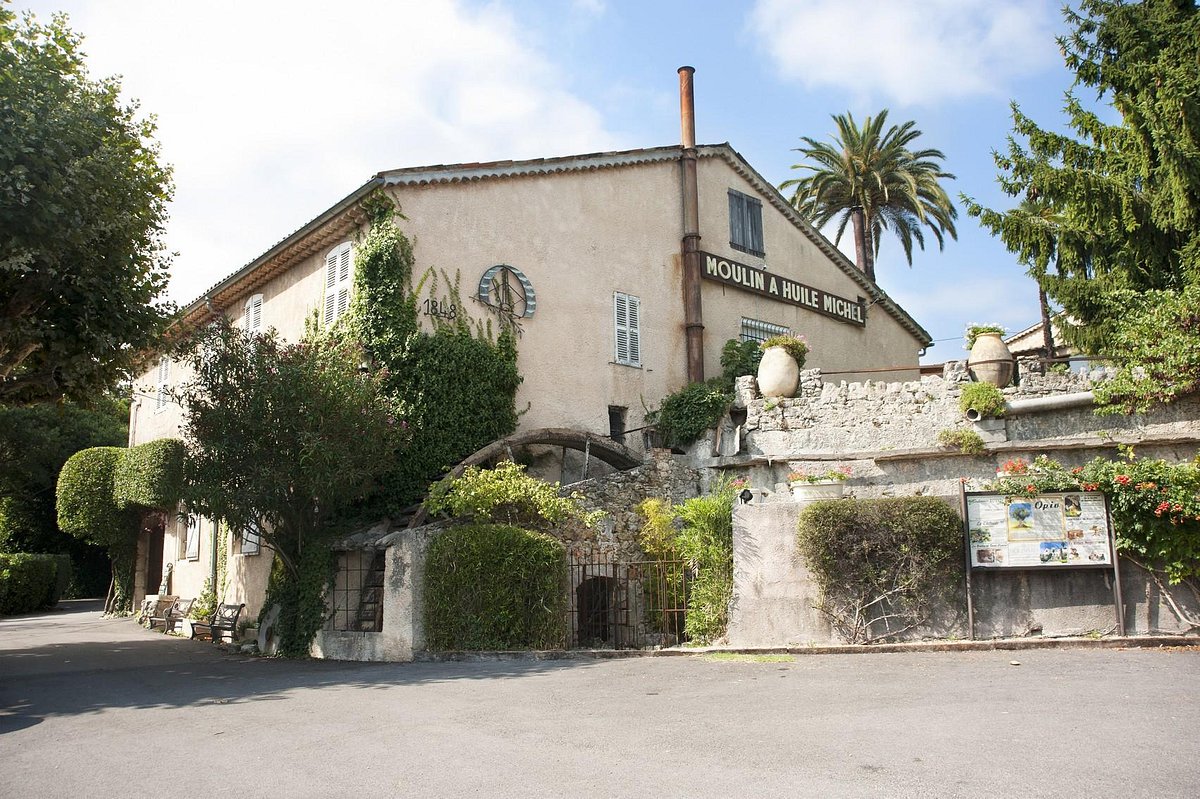
Those who choose to spend their holidays here won’t be disappointed by this peaceful setting, perfect for long walks or horse-riding in the midst of 450 hectares of forest. Golfers can combine business with pleasure: the Begude golf course premises are located in a former castle dating back to the 19th century, built on medieval foundations.
Throughout the year, ValbonOpio offers a quality destination with a world reputation for its golf courses & resort , luxury shopping areas offering various amenities incl fine dining and wine tasting.
More recently, Opio has gained renown as being home to Club Med and several splendid golf courses. With over a thousand acres of forested land around the village, hikers and horseback riders can savor long outings in a lovely, natural setting. With a full events calendar and a wide variety of merchants, Opio residents and visitors enjoy all the best of the Côte d’Azur.
